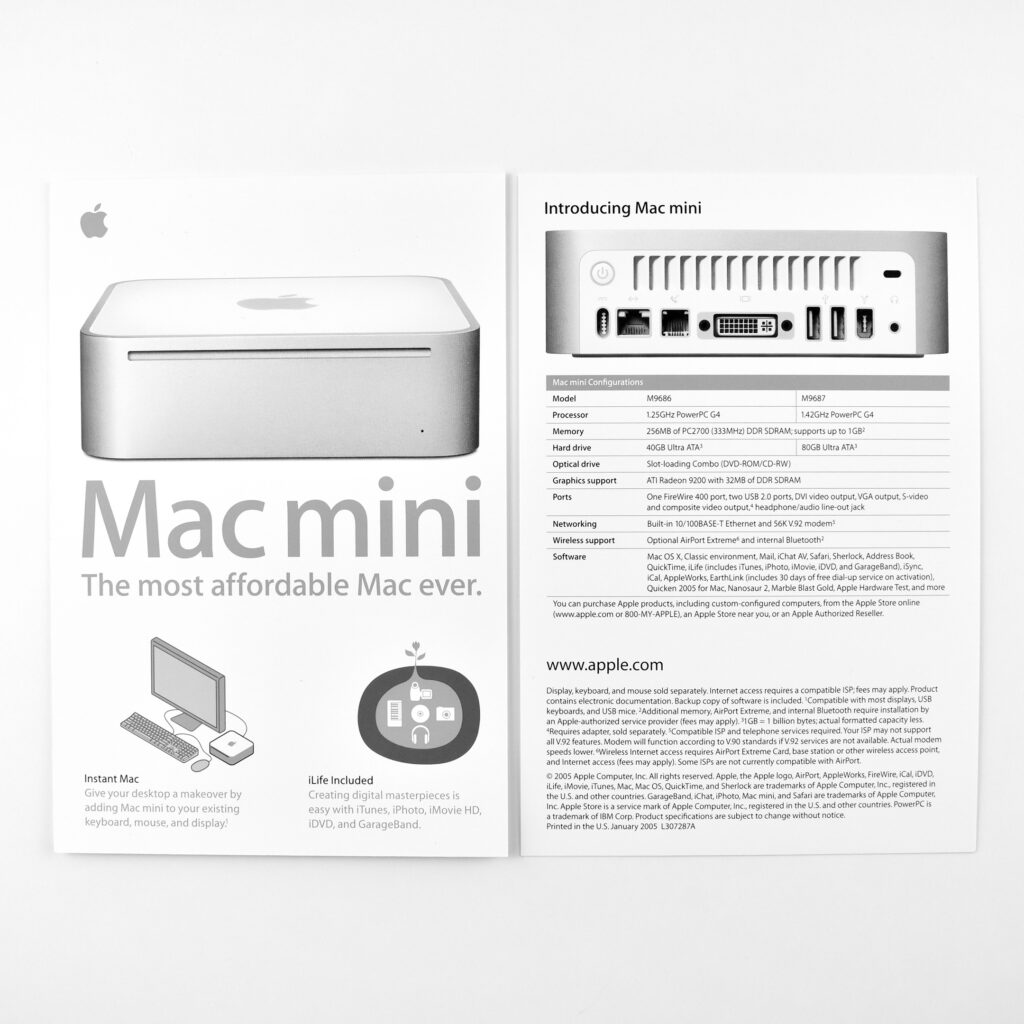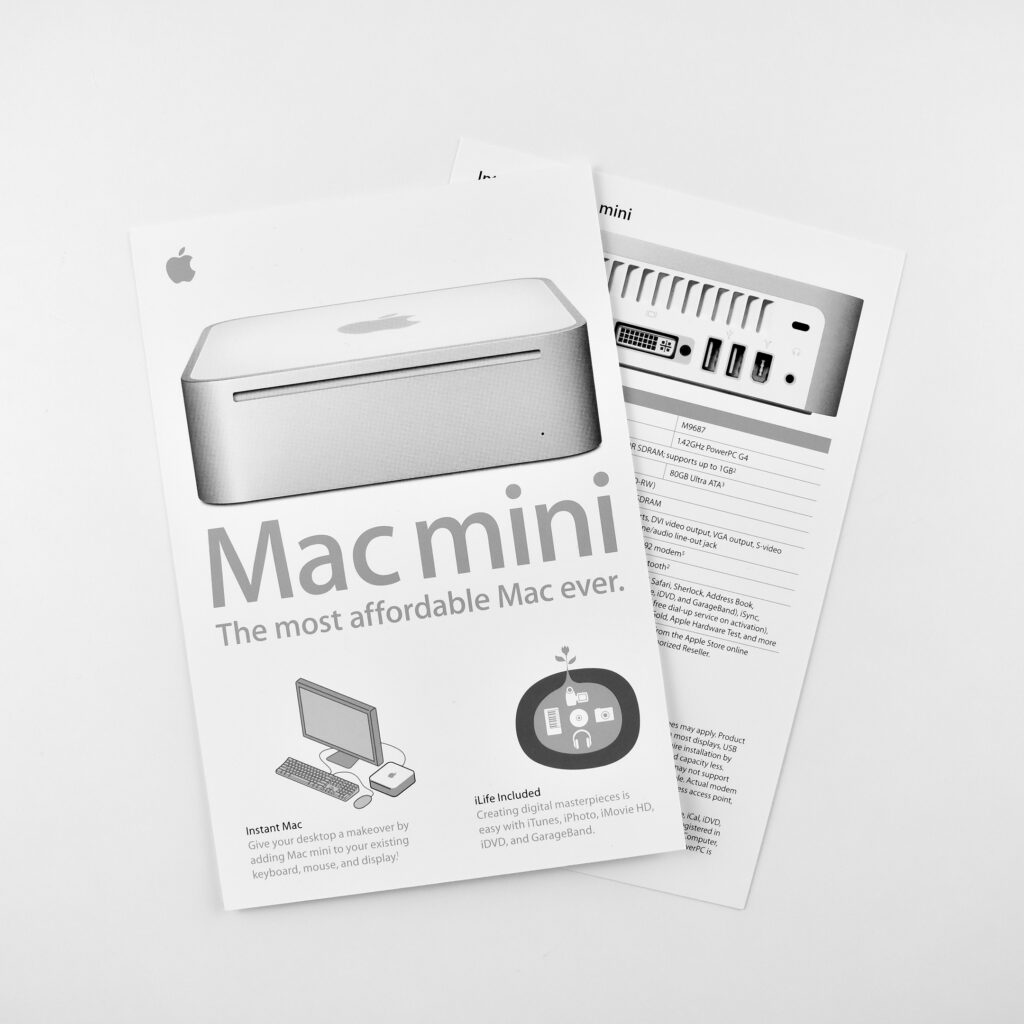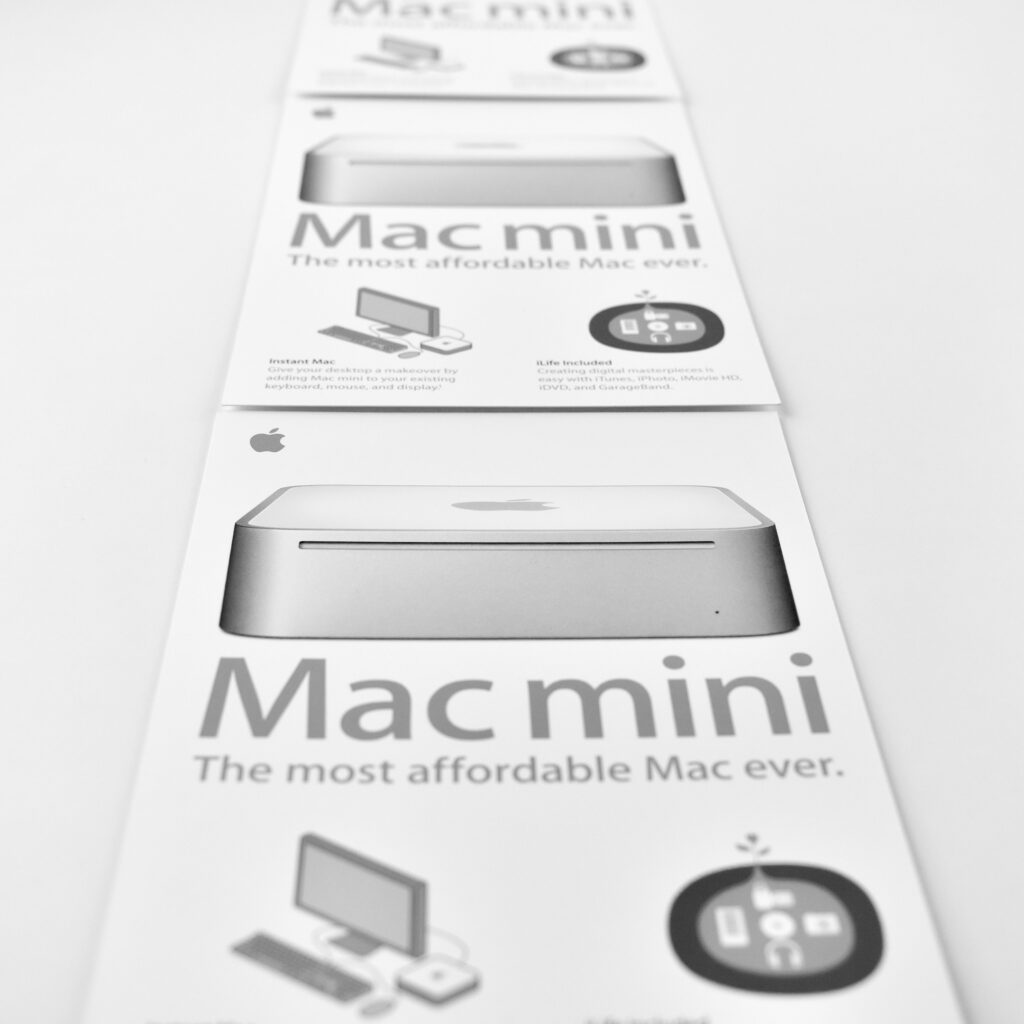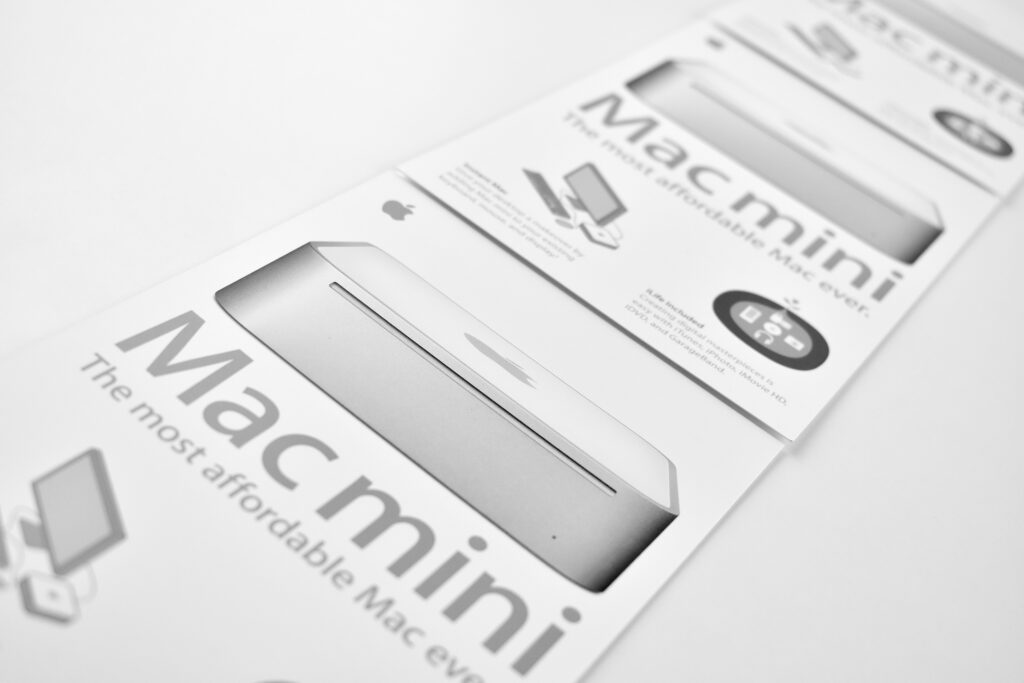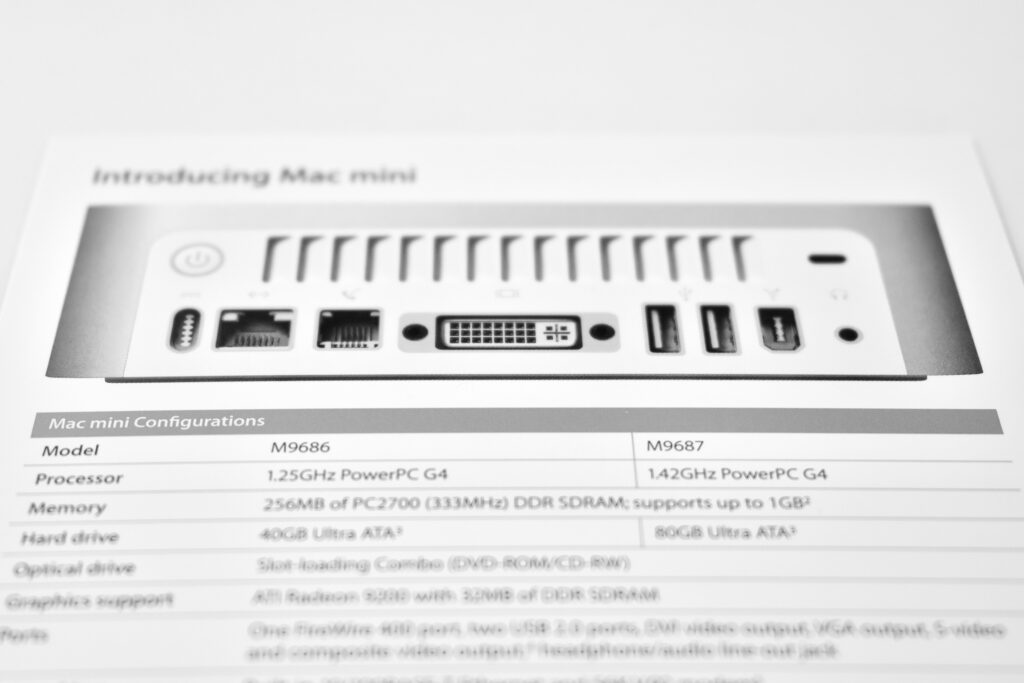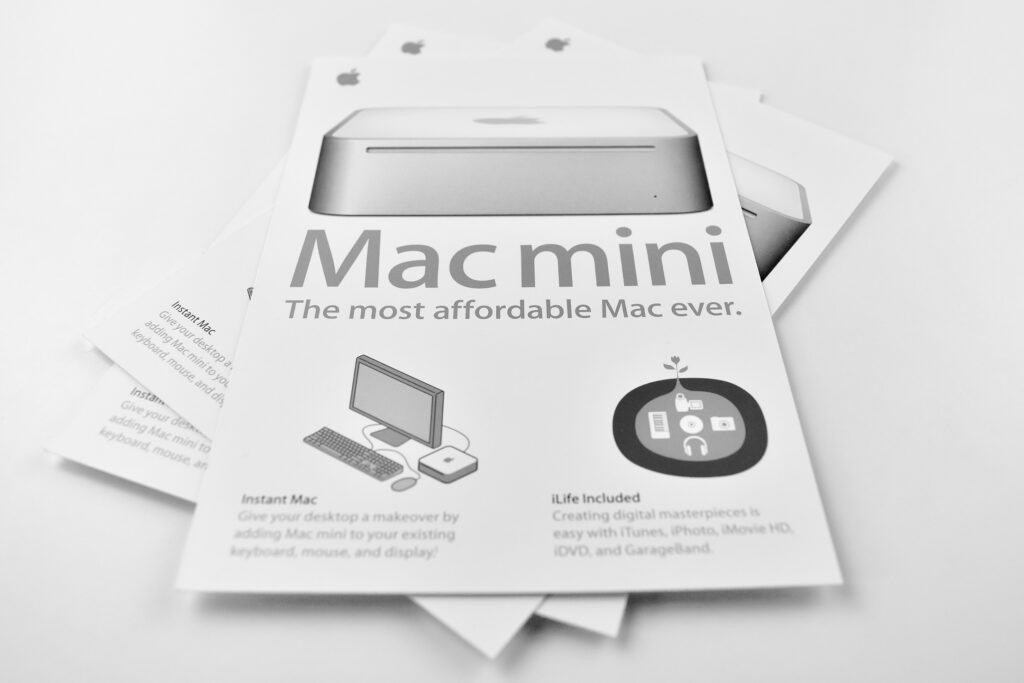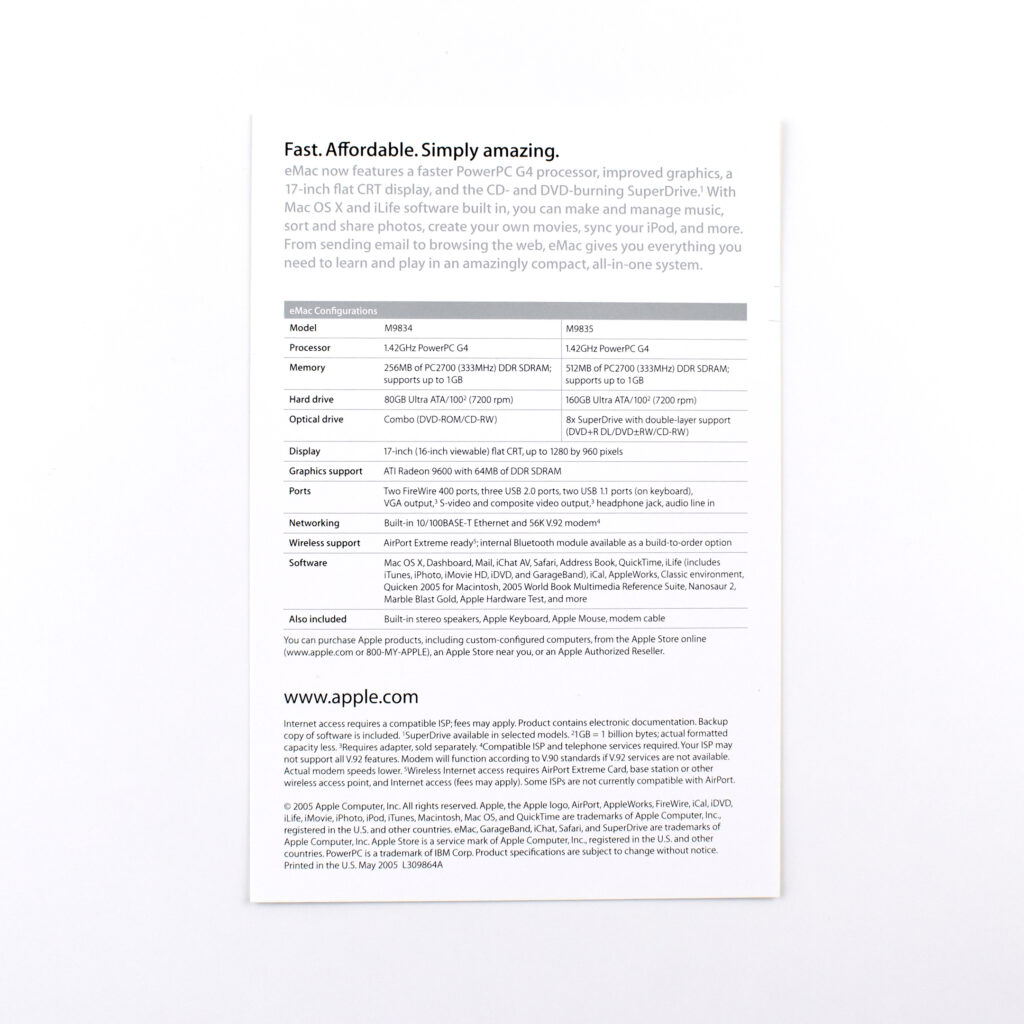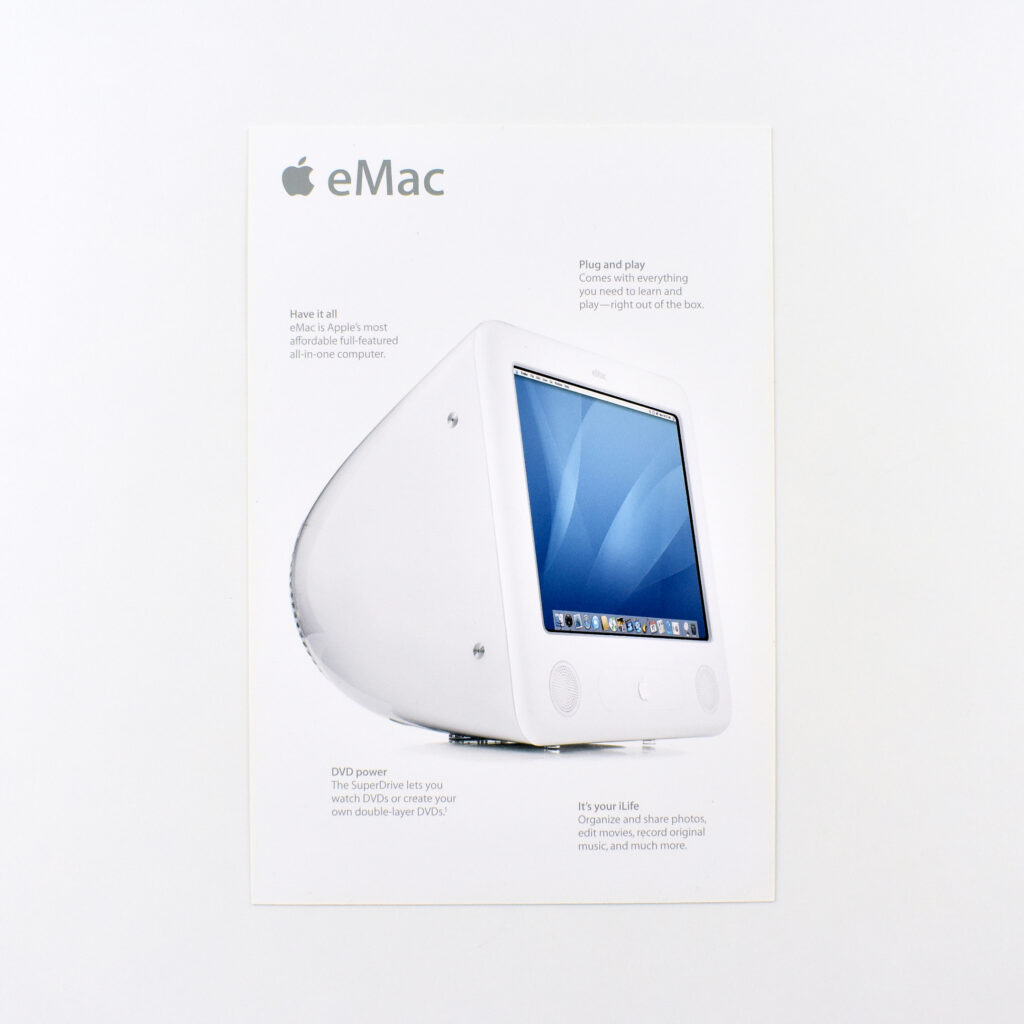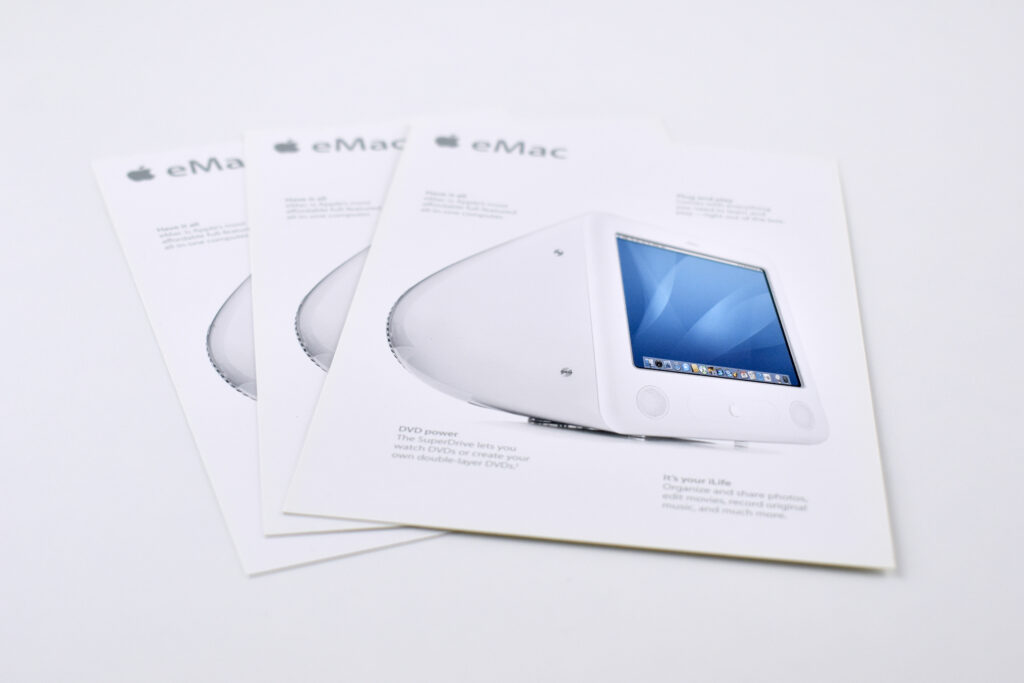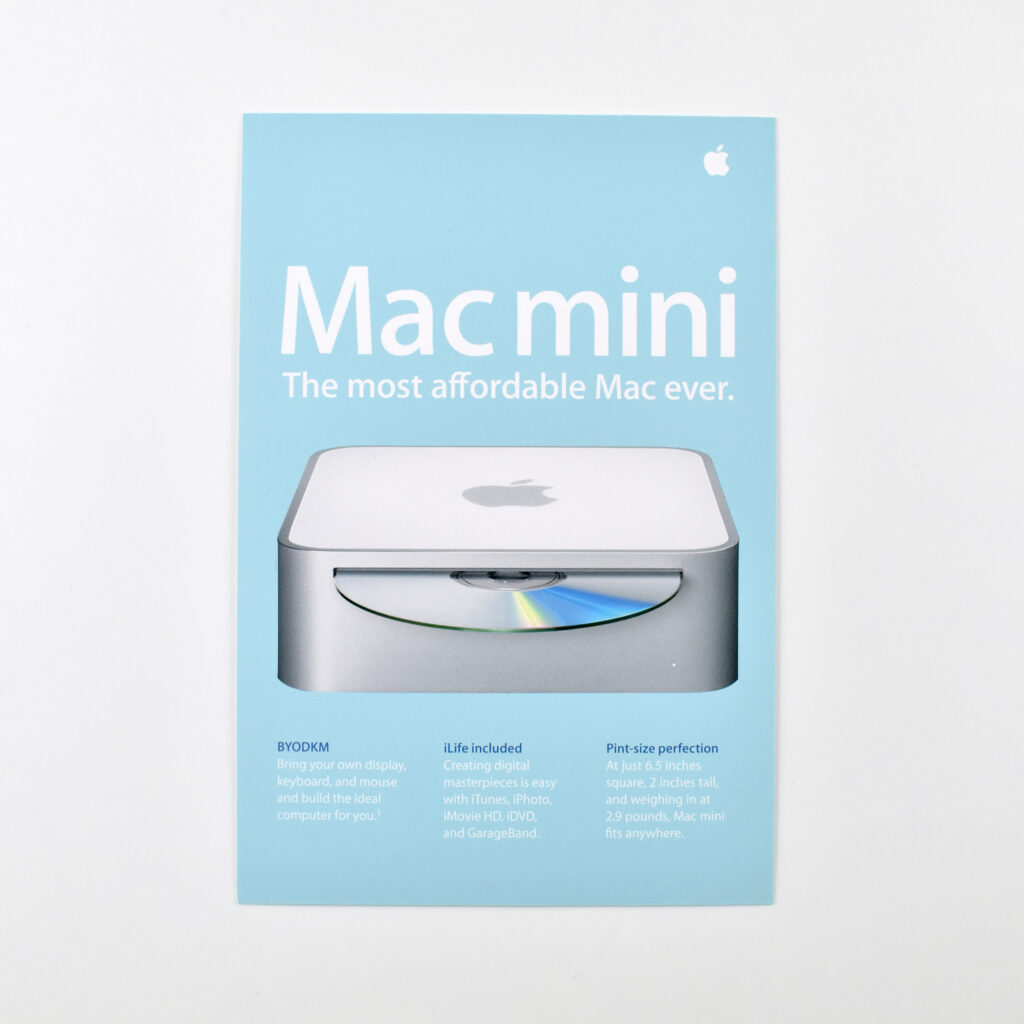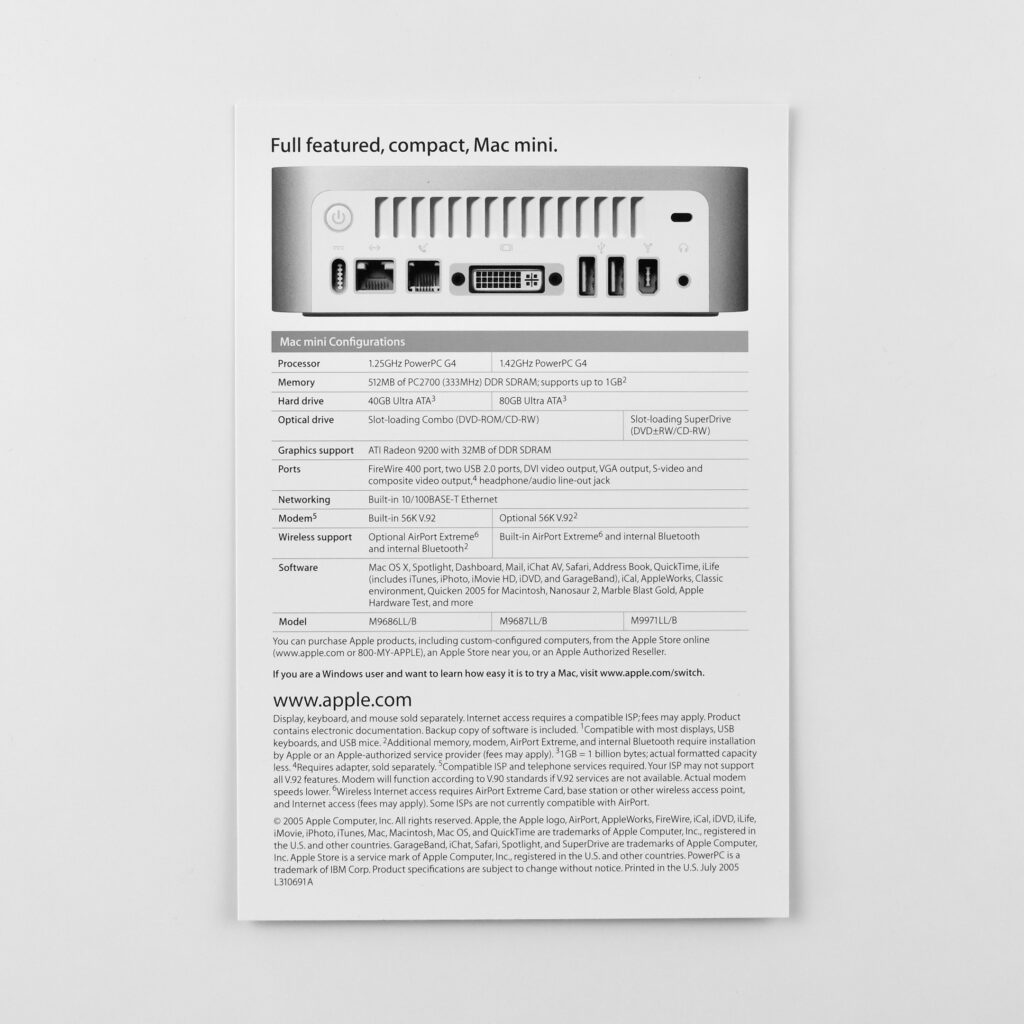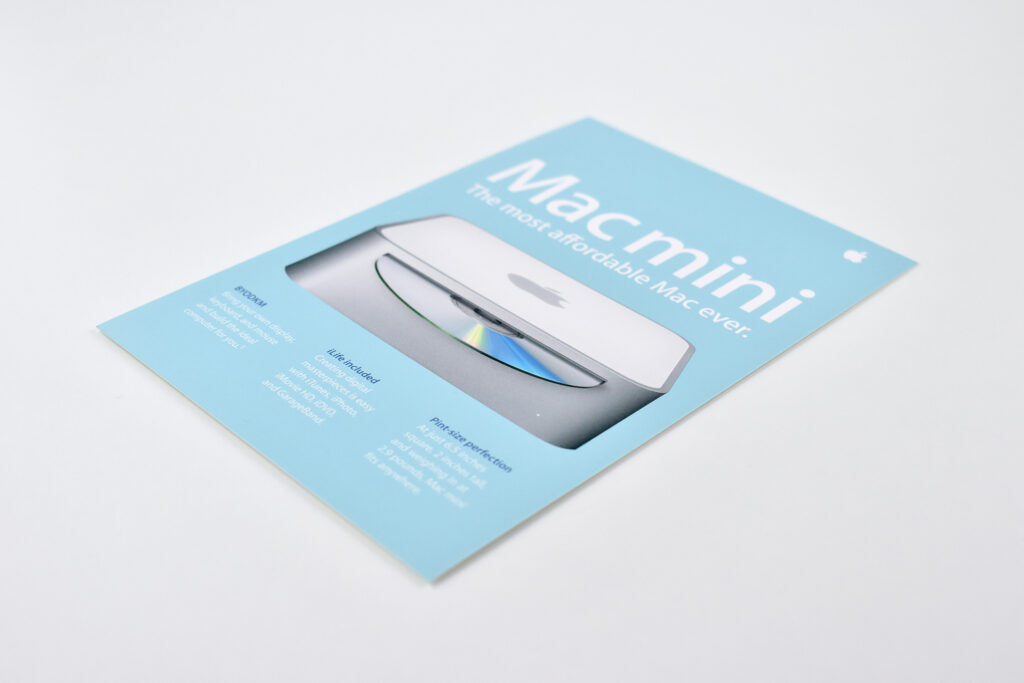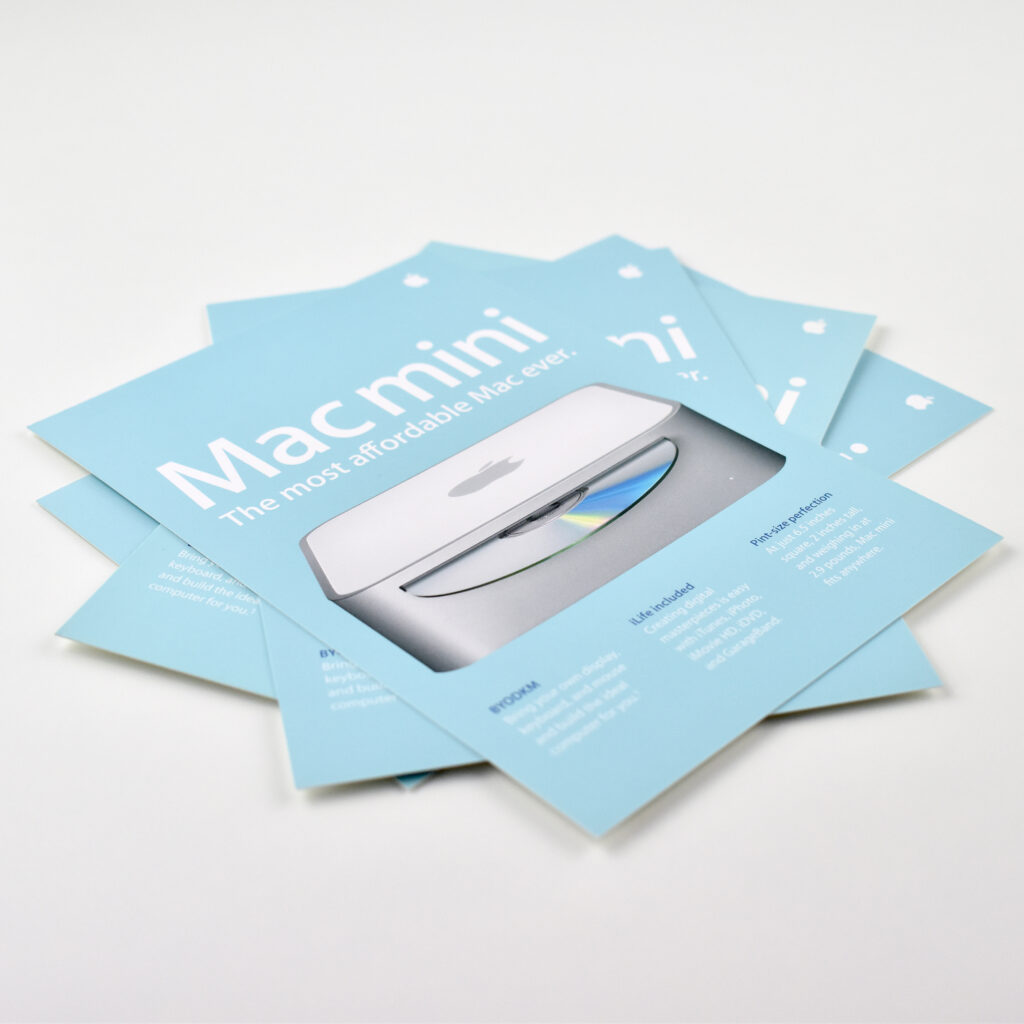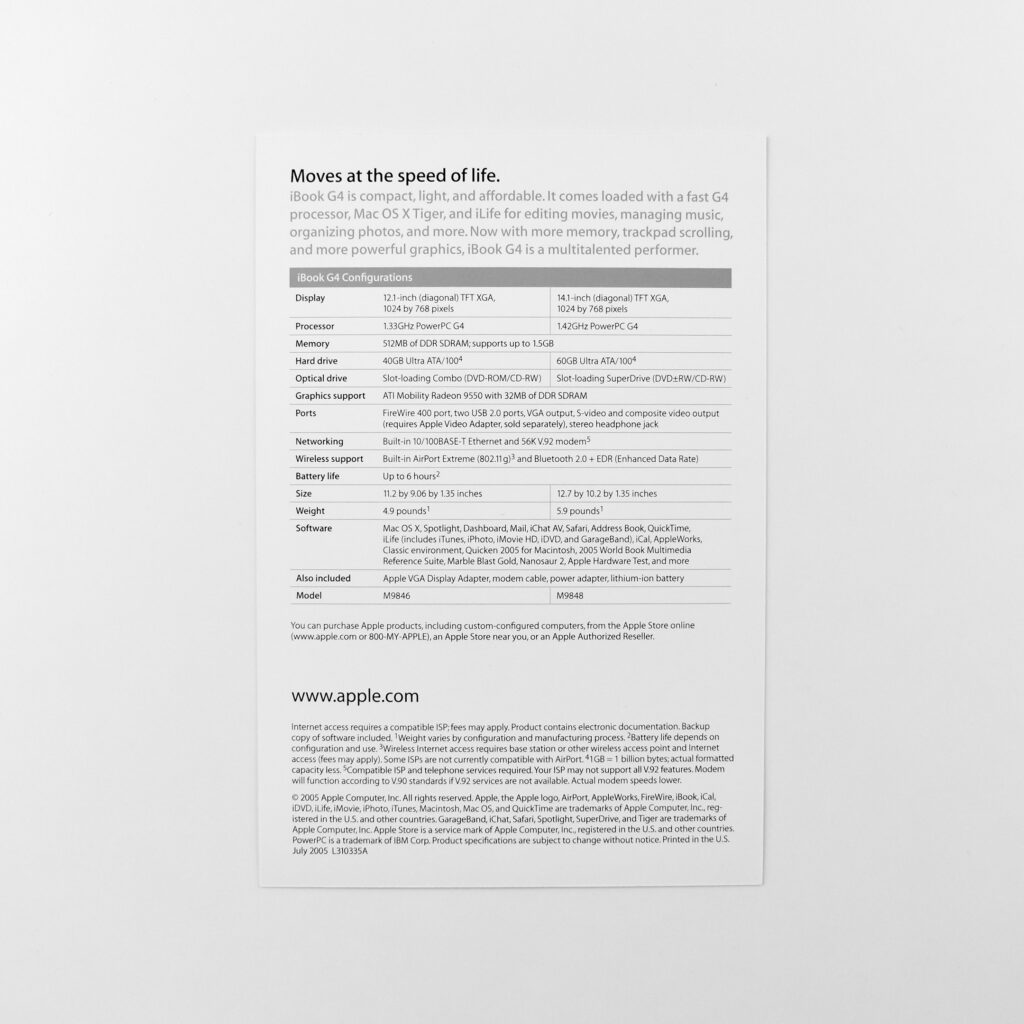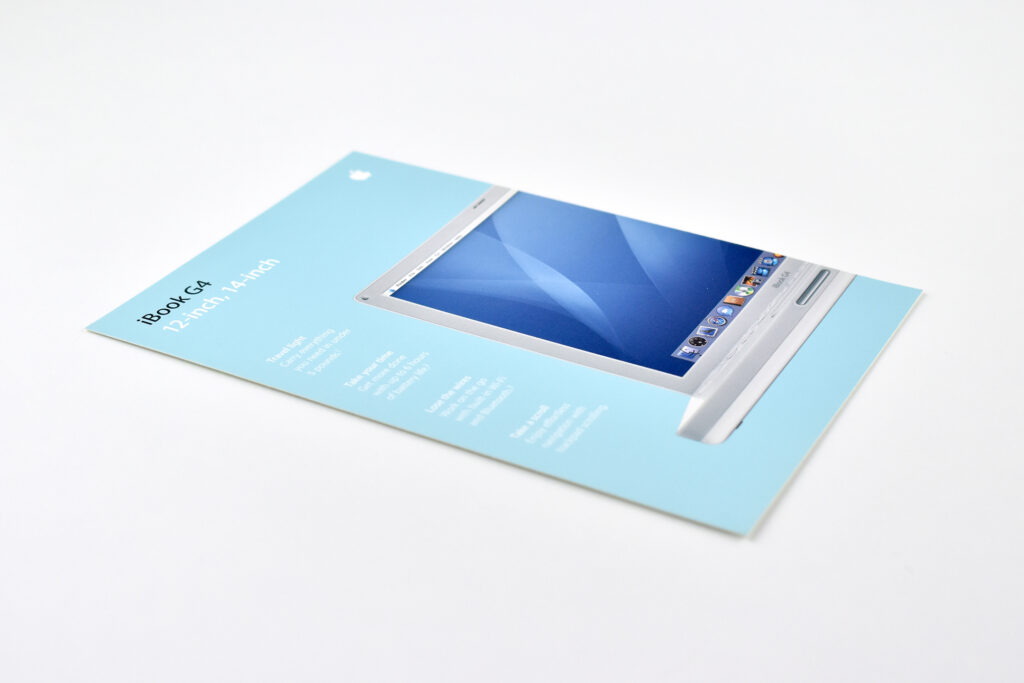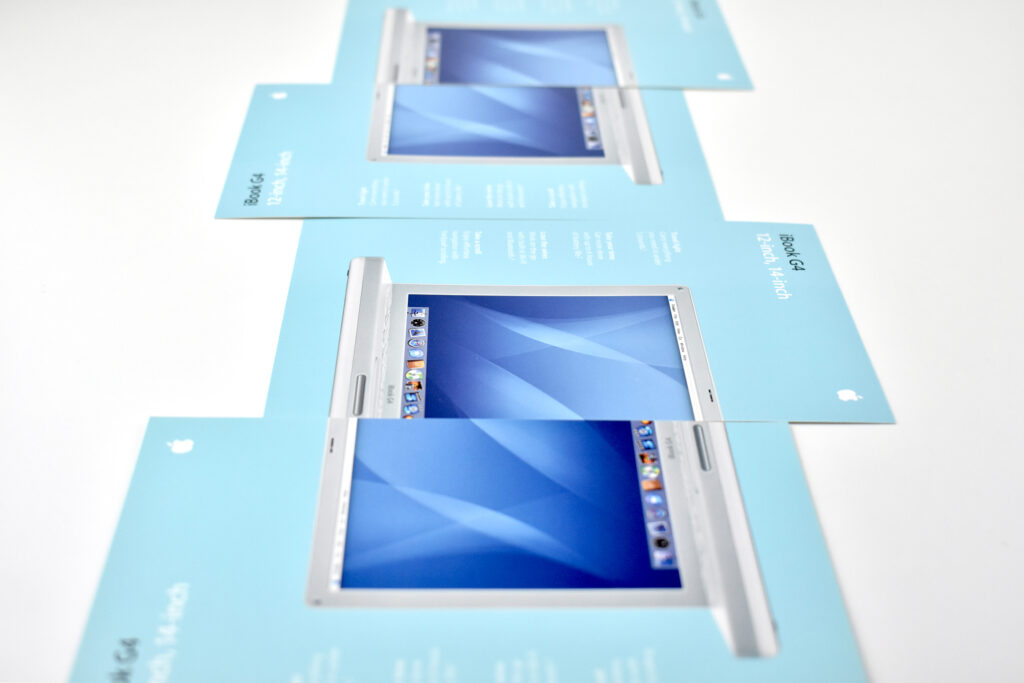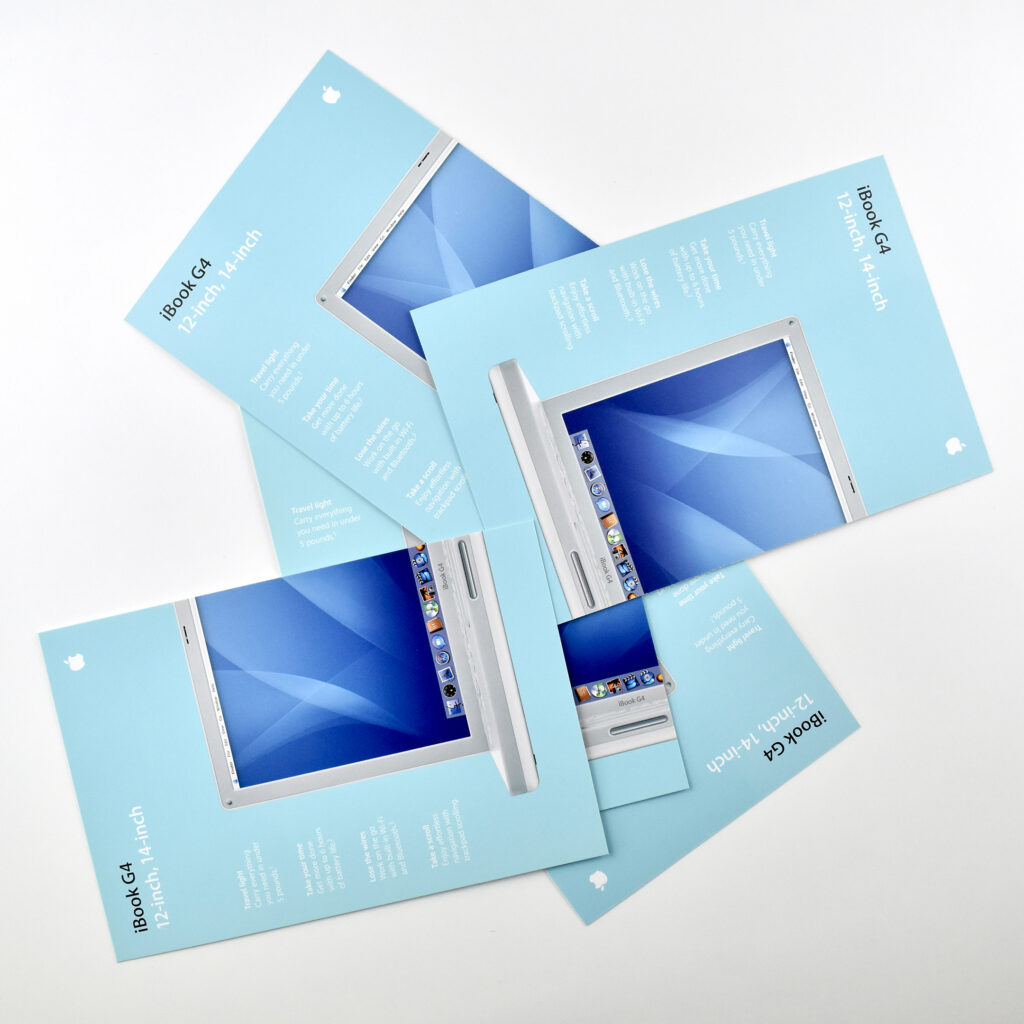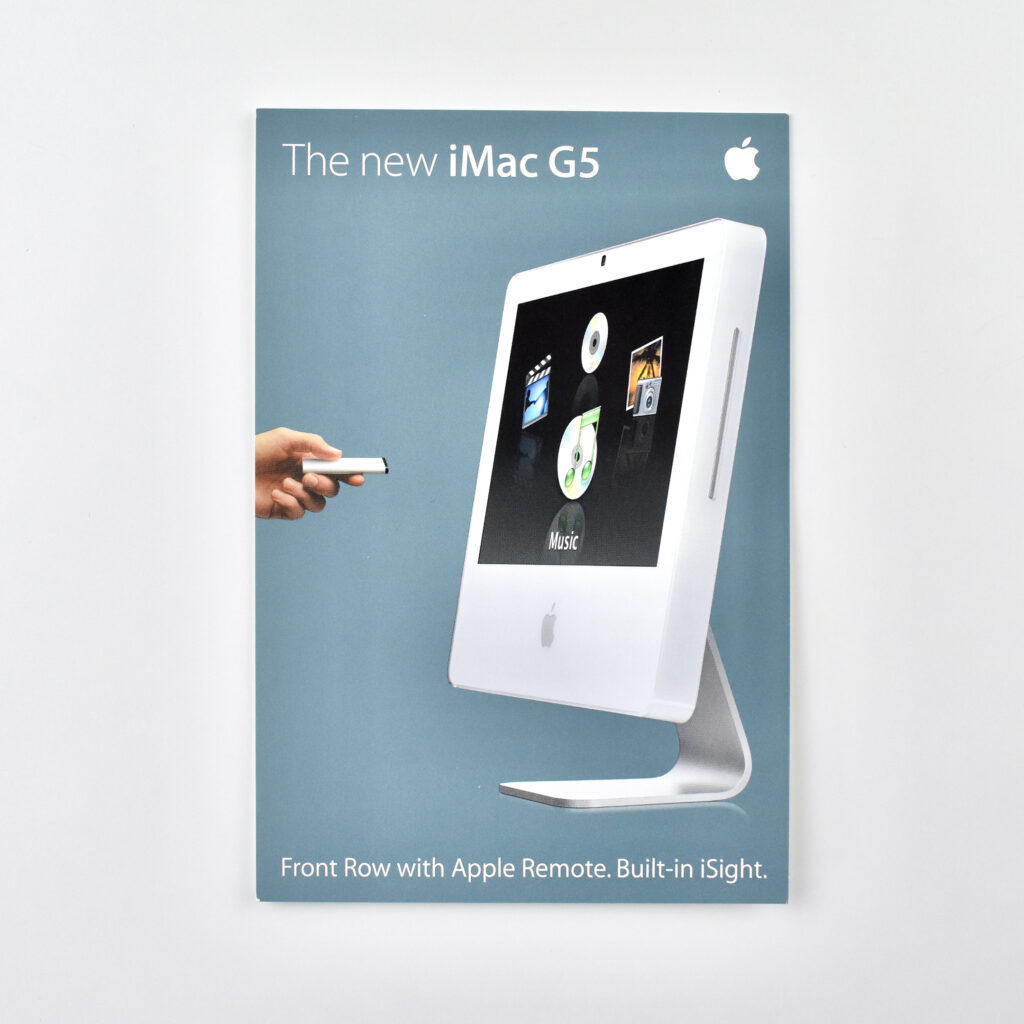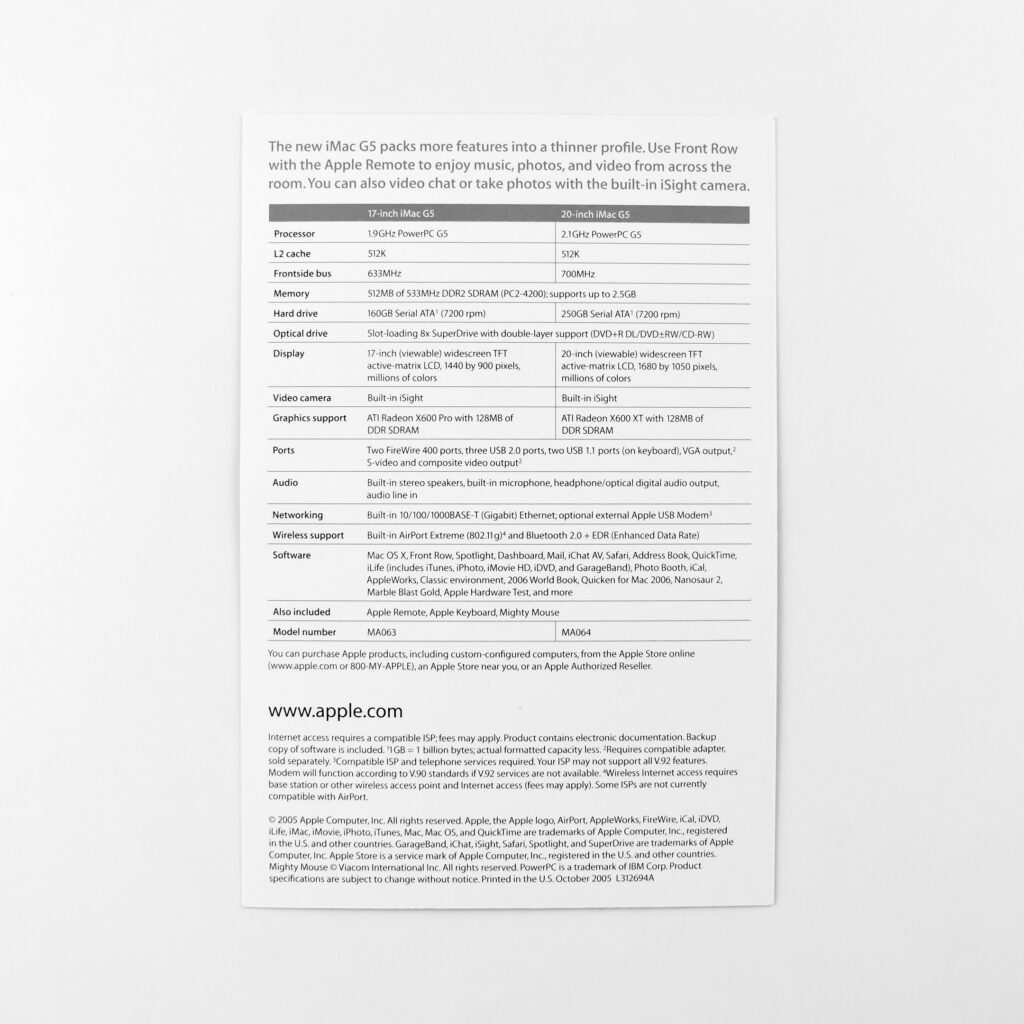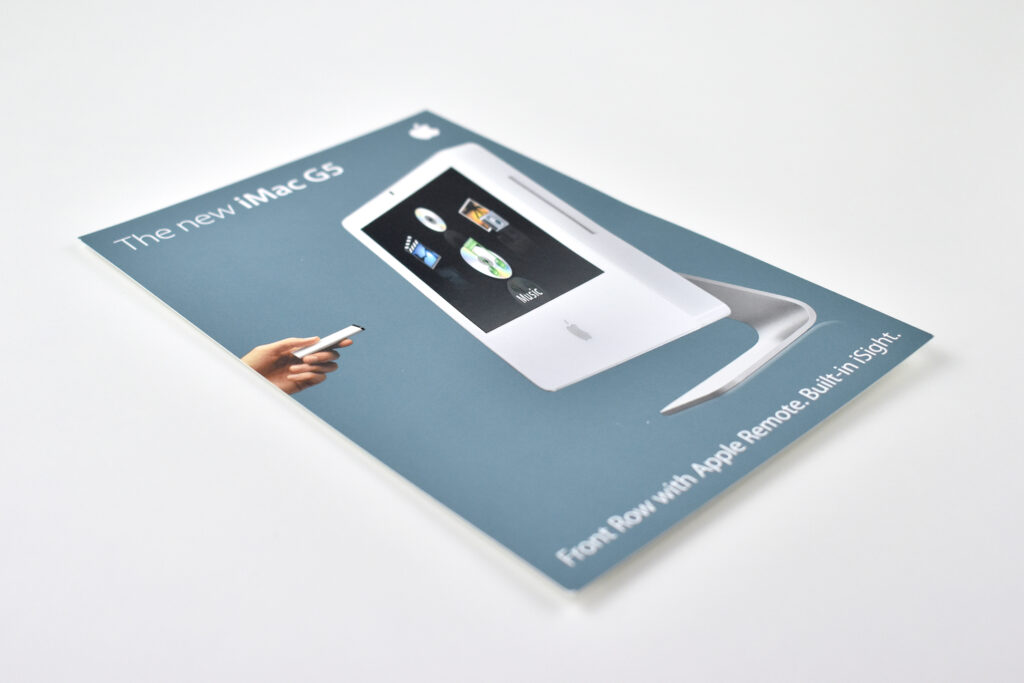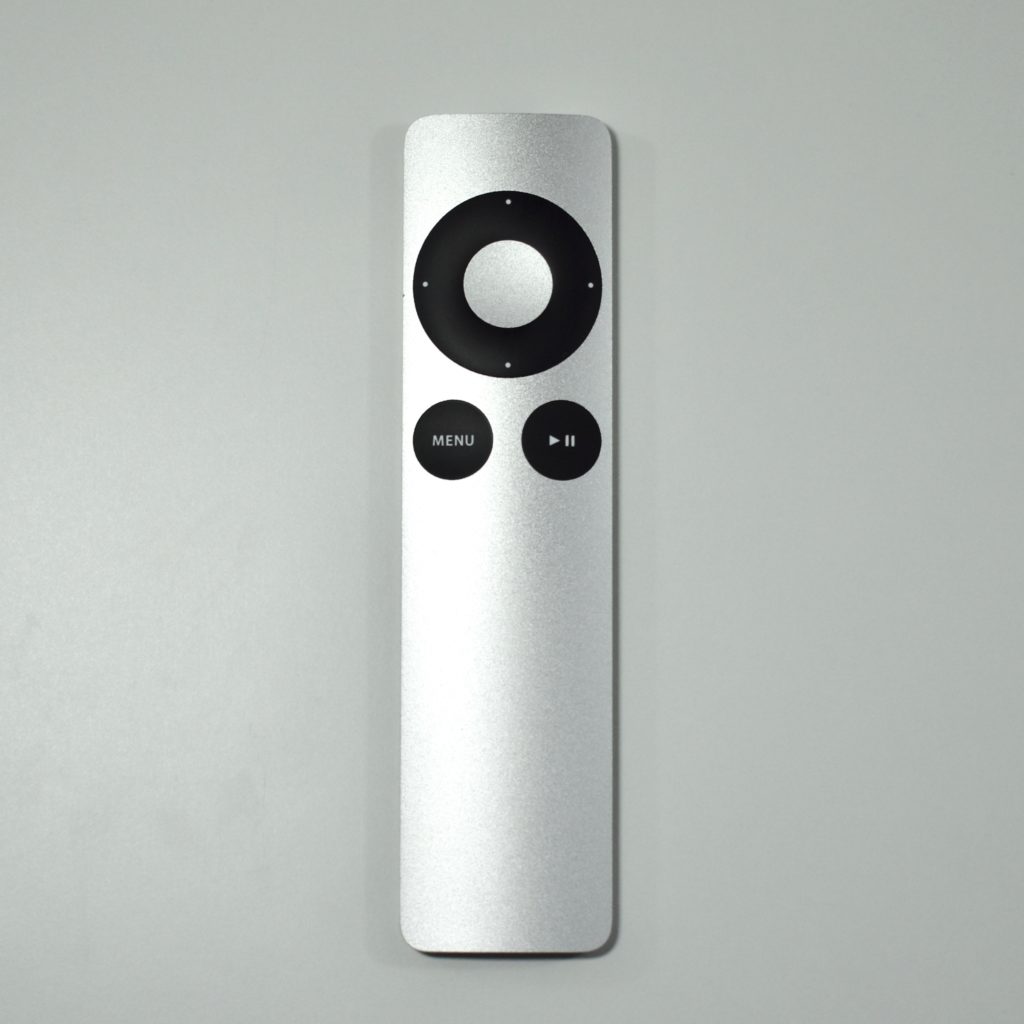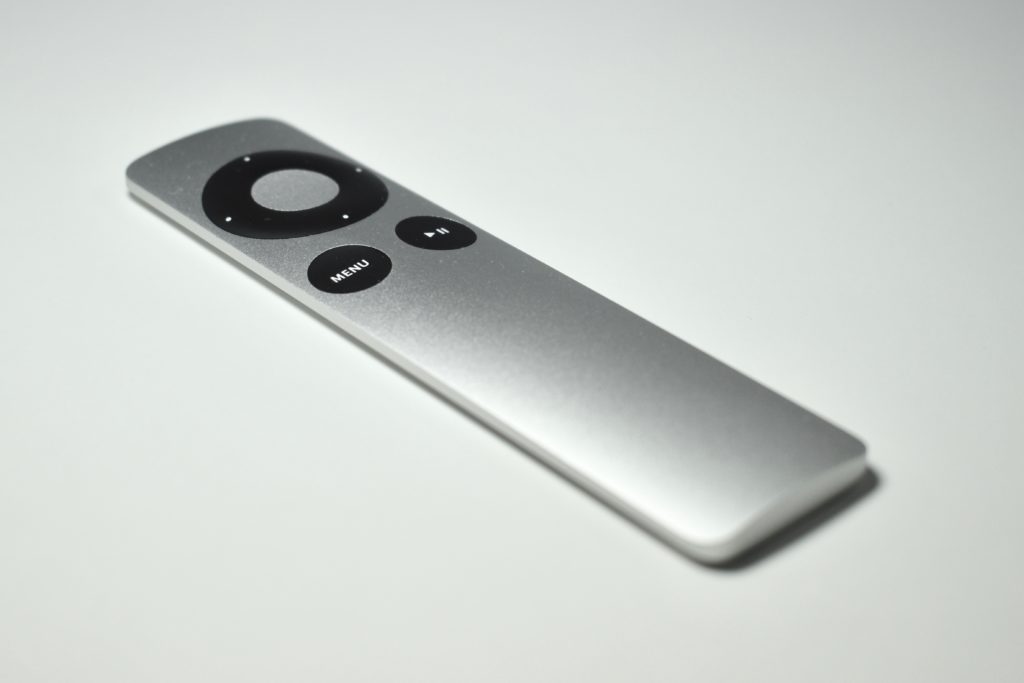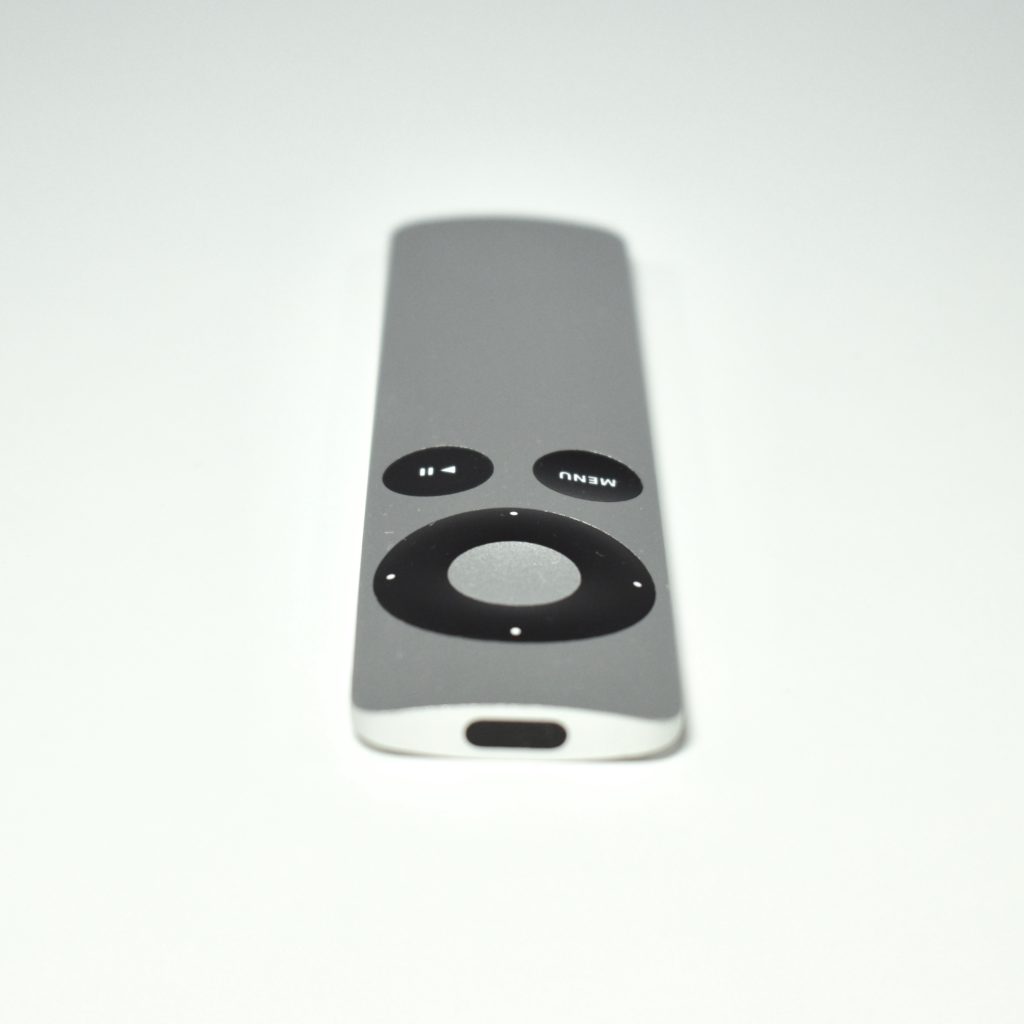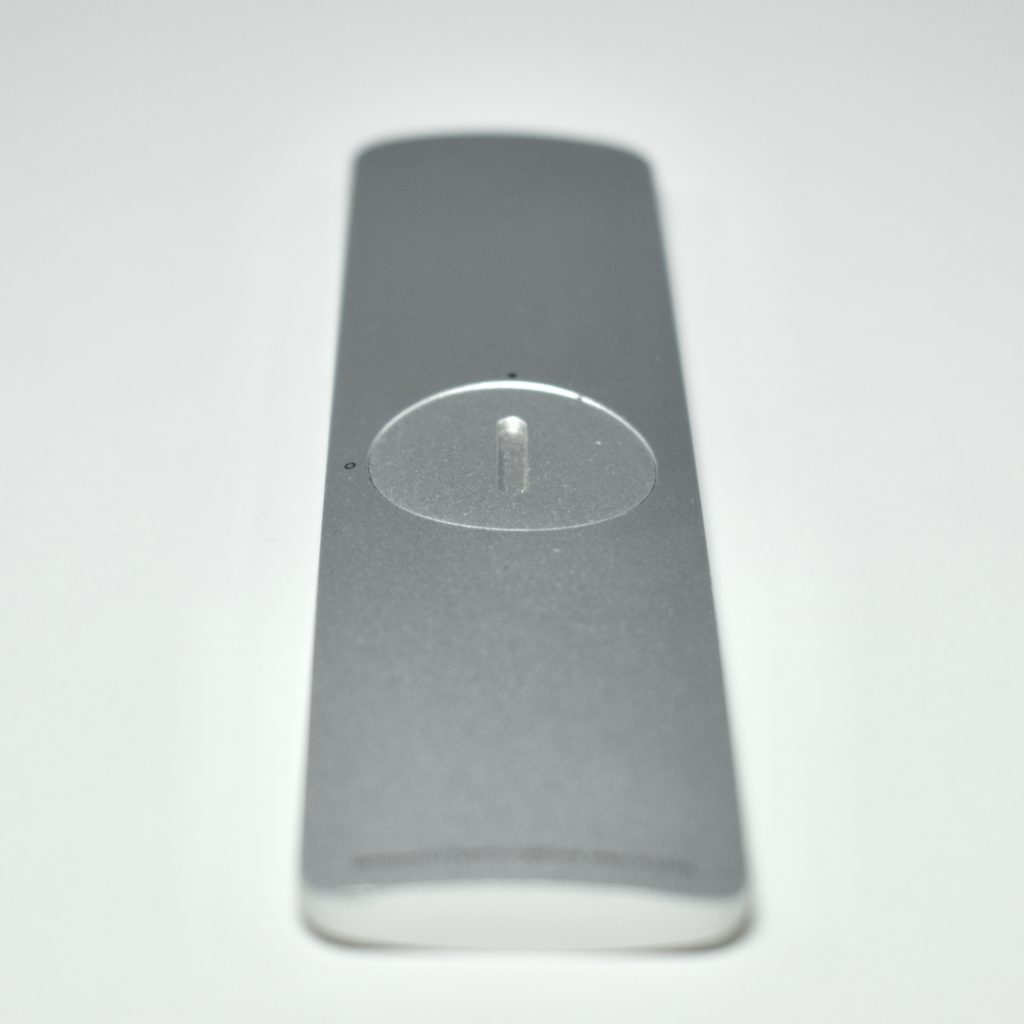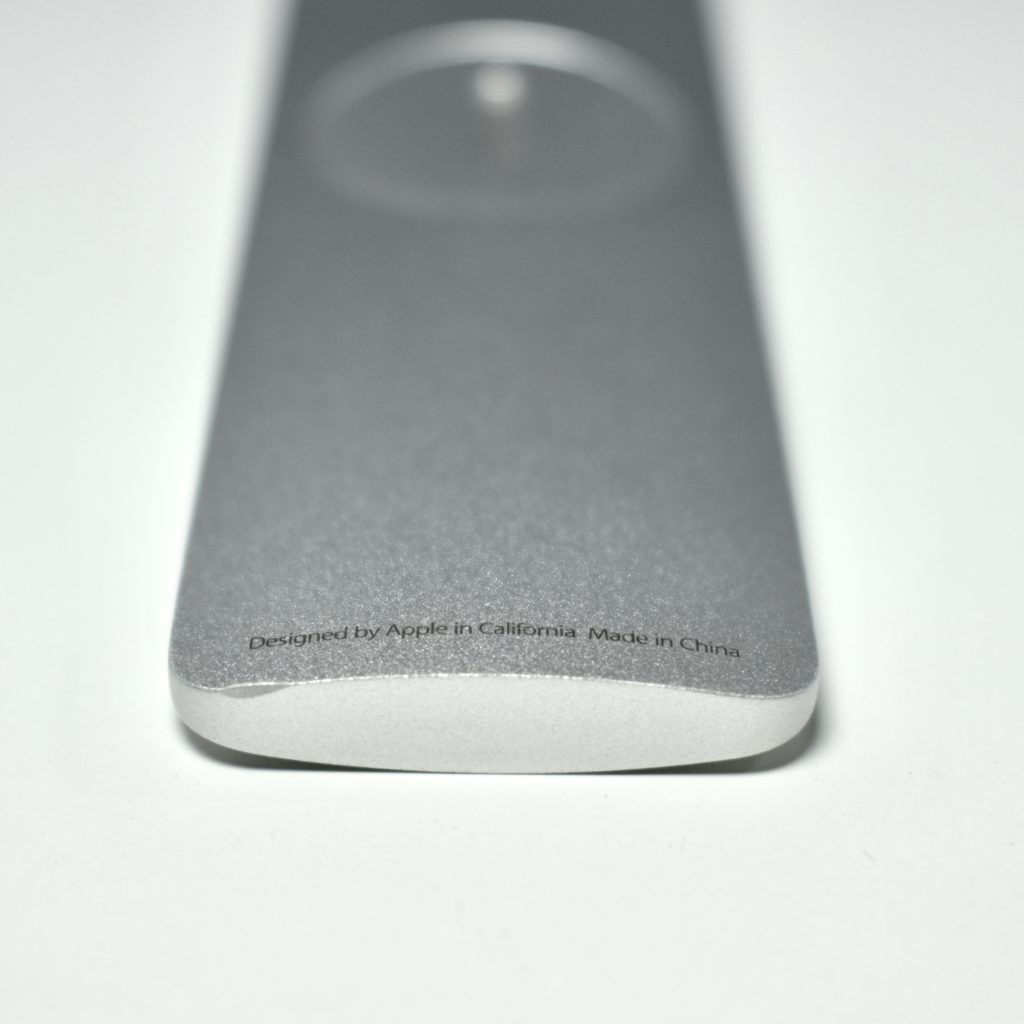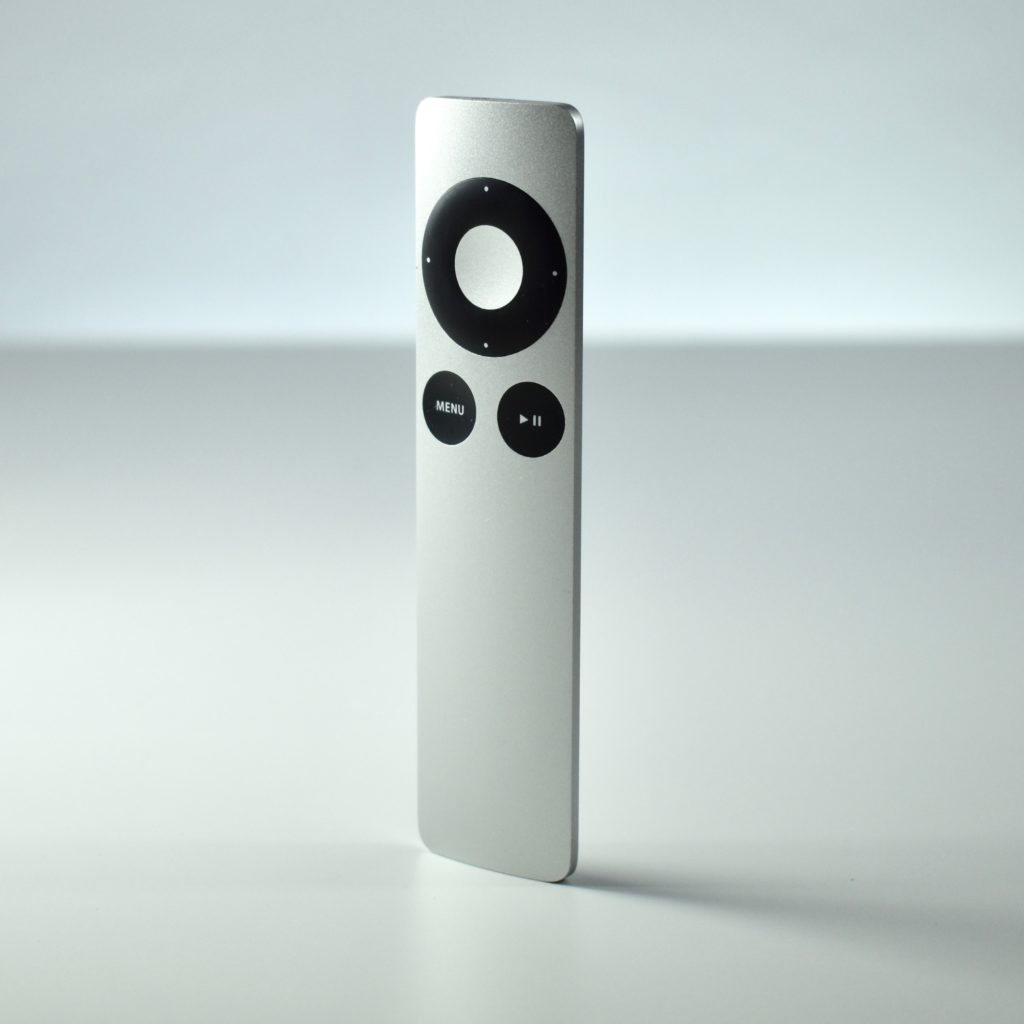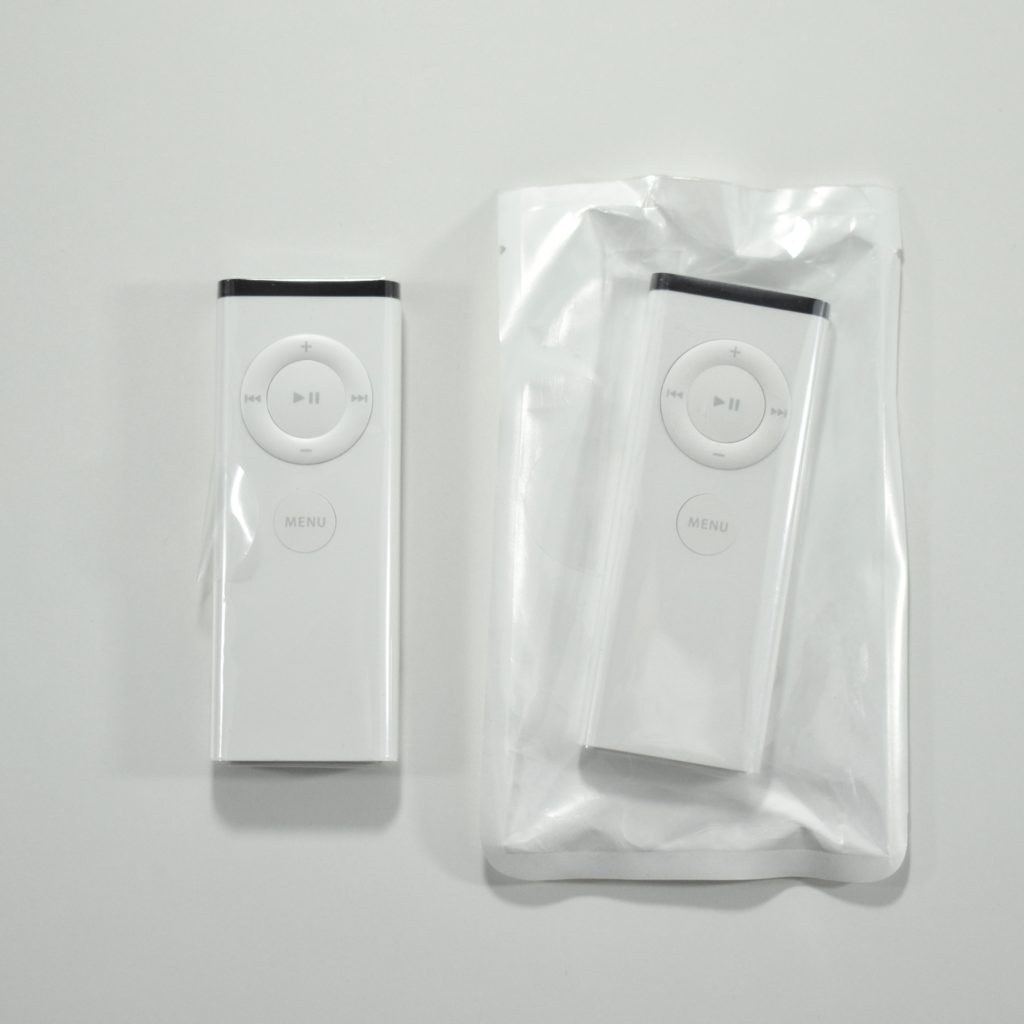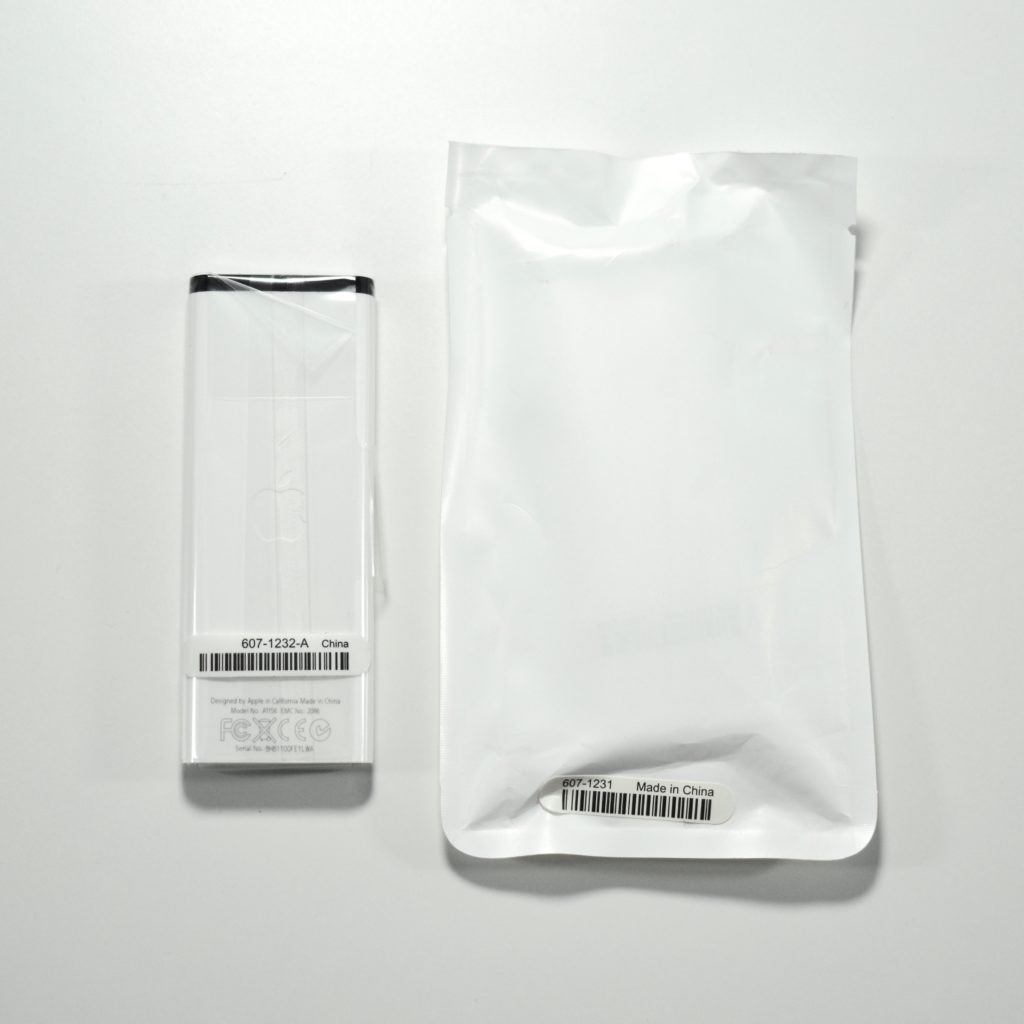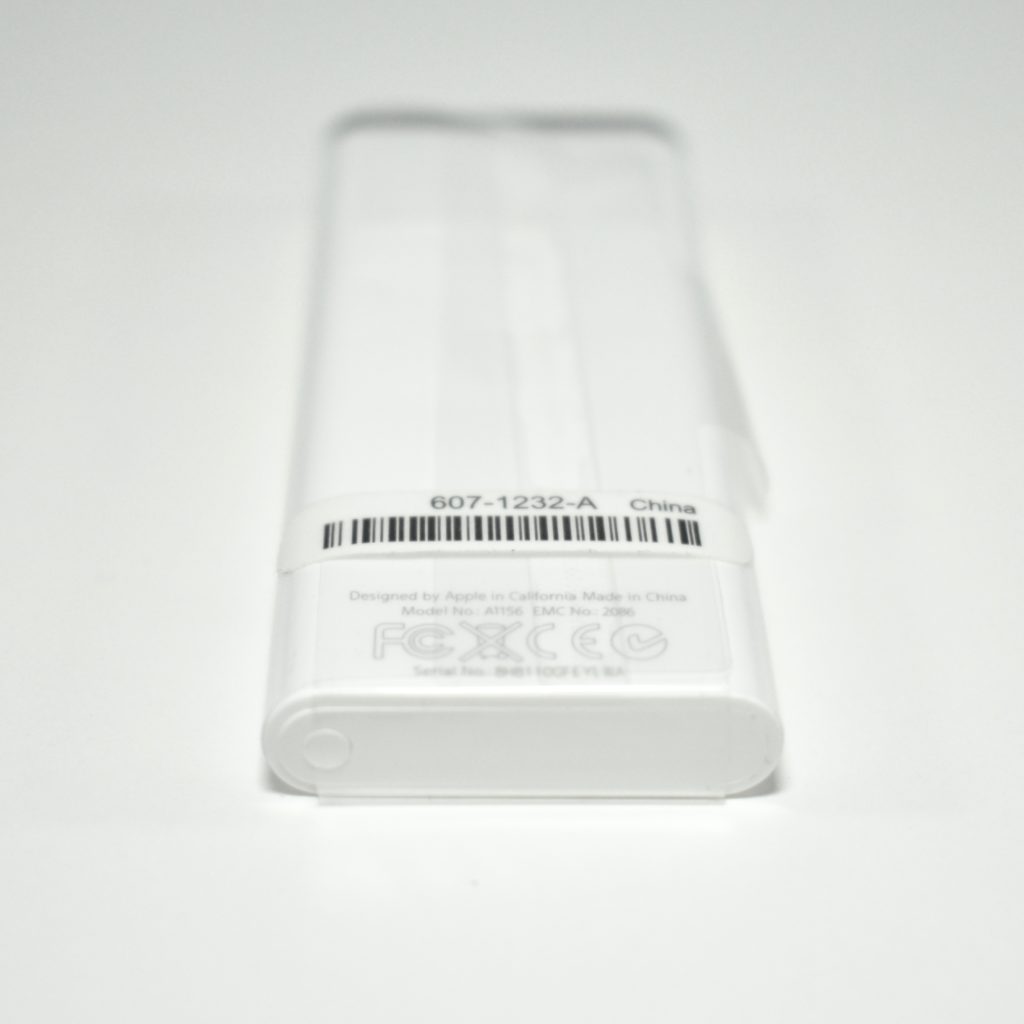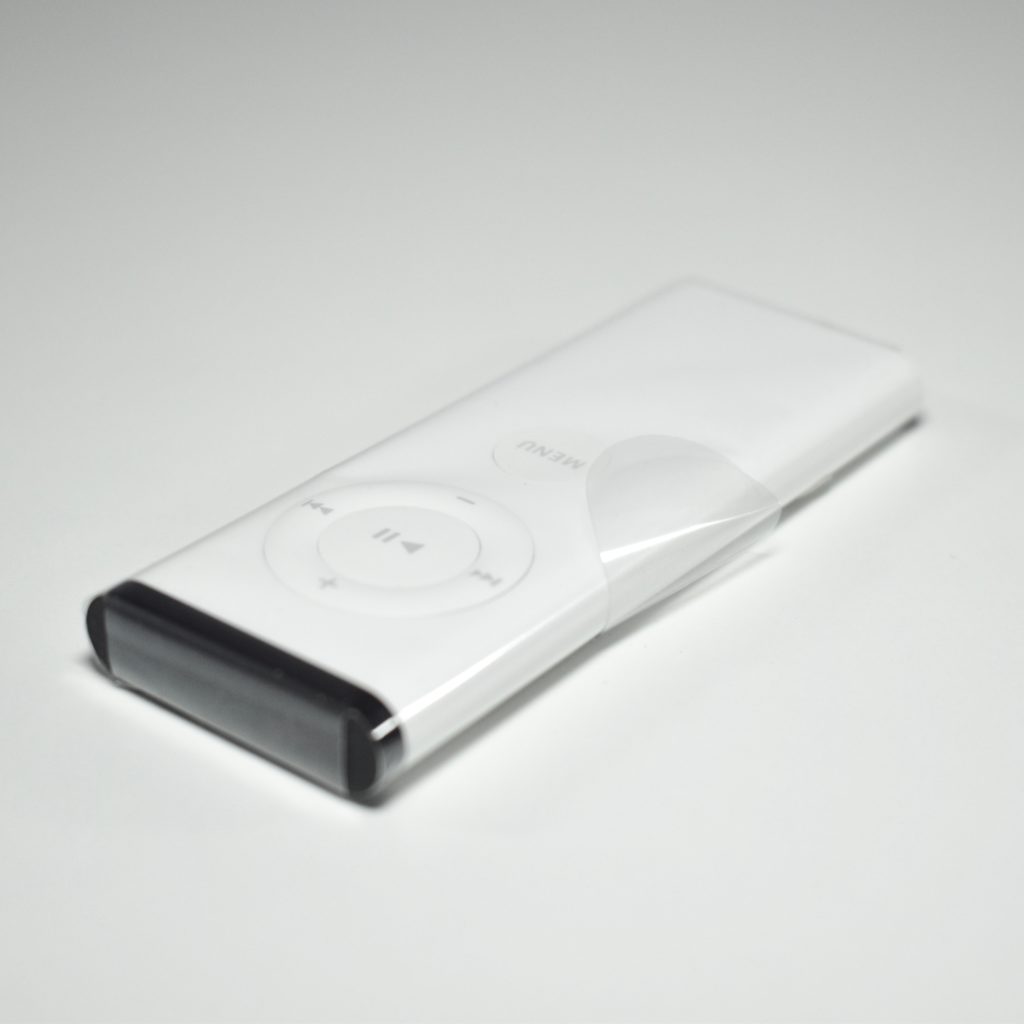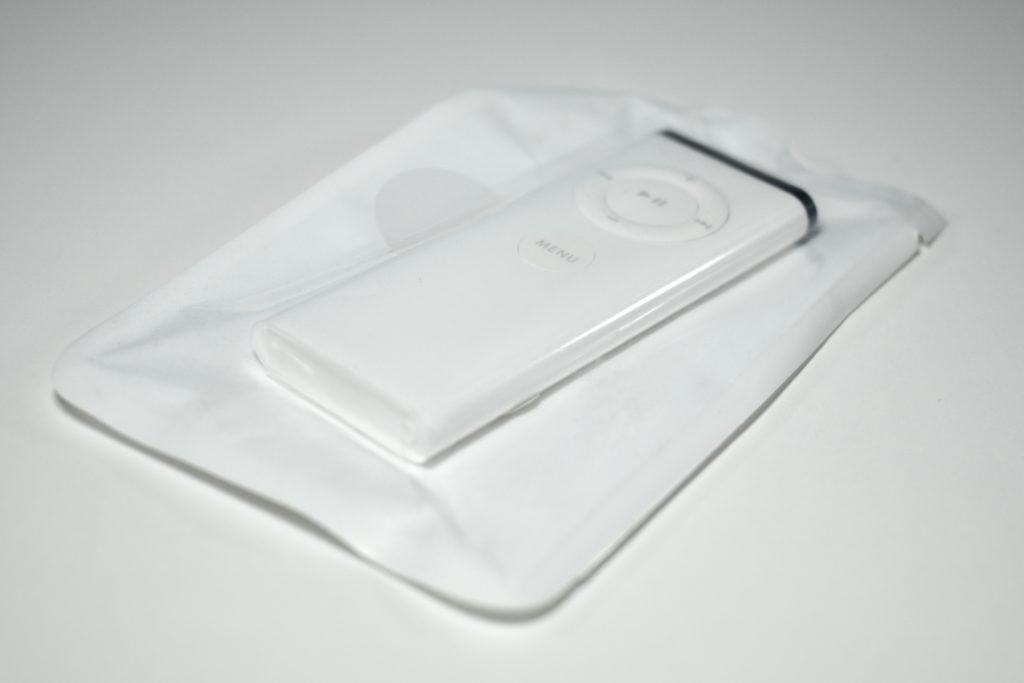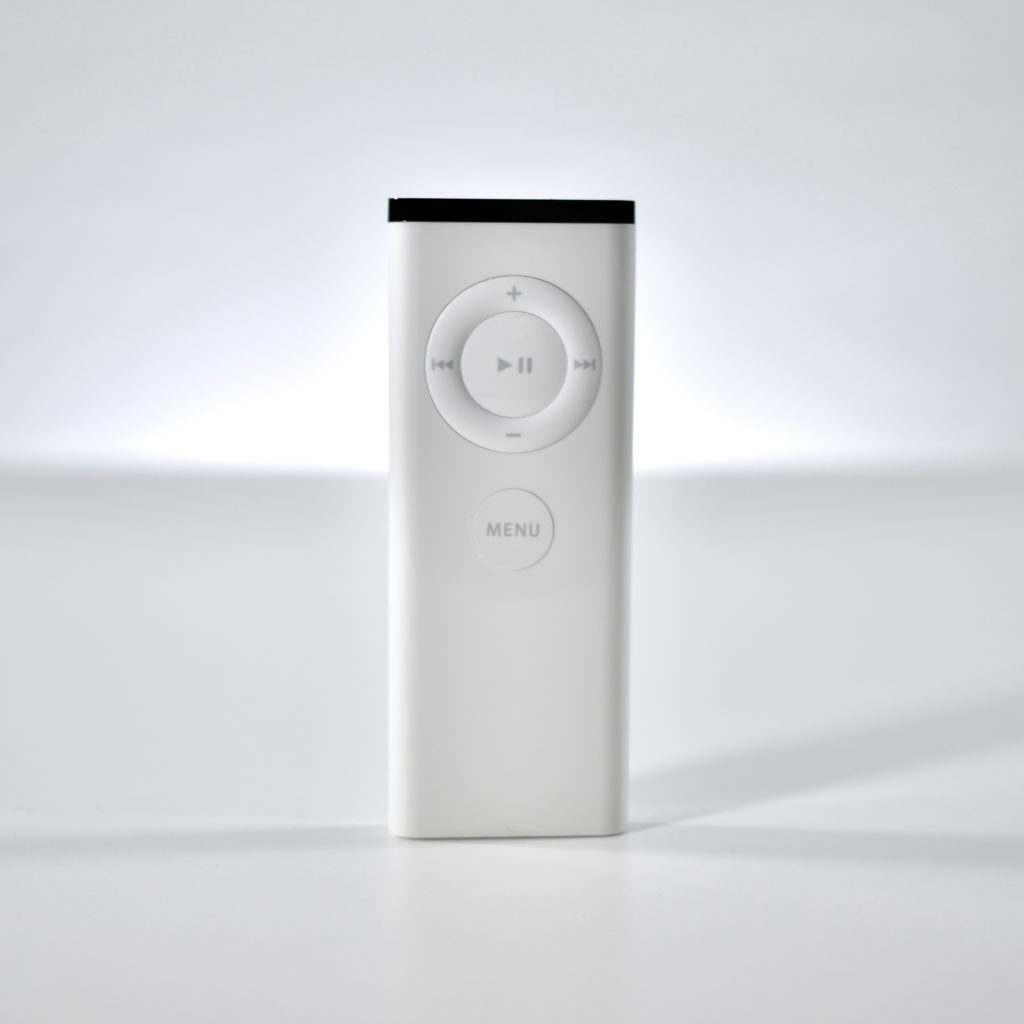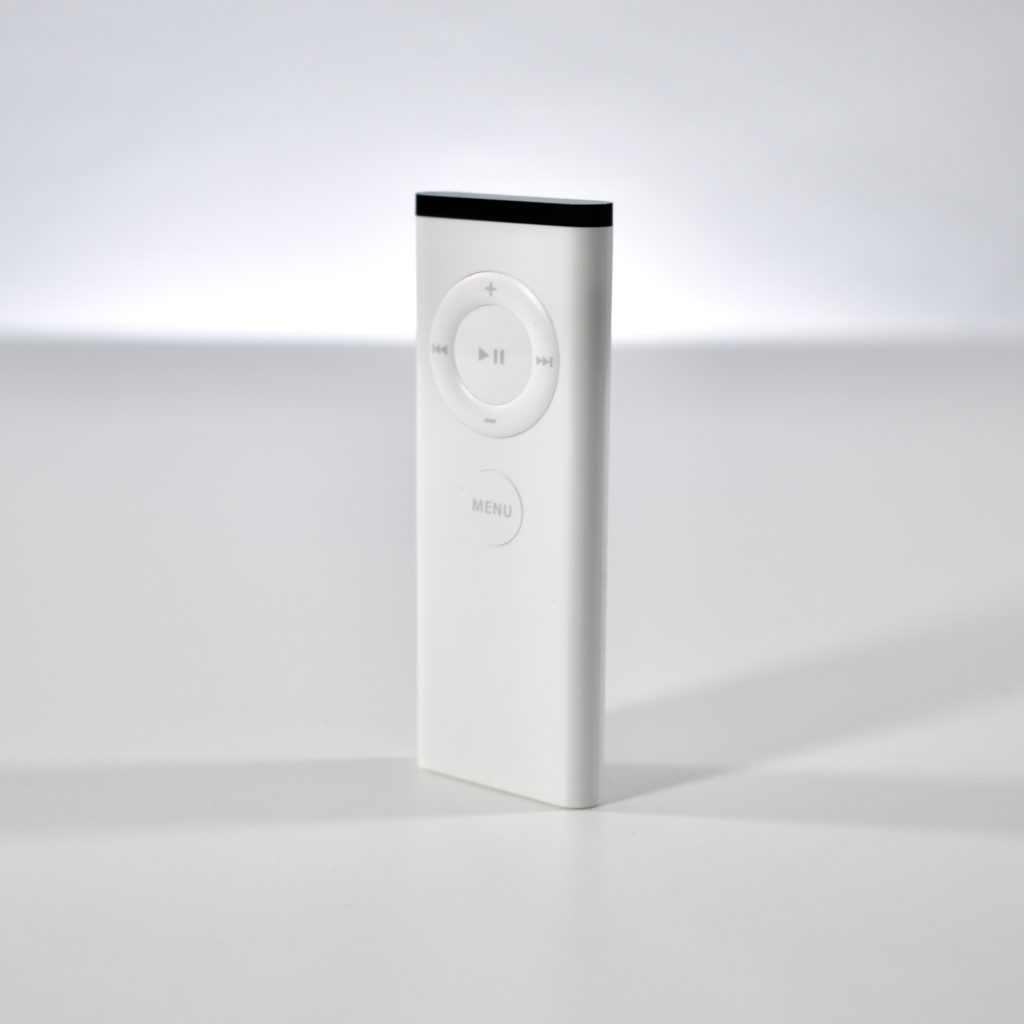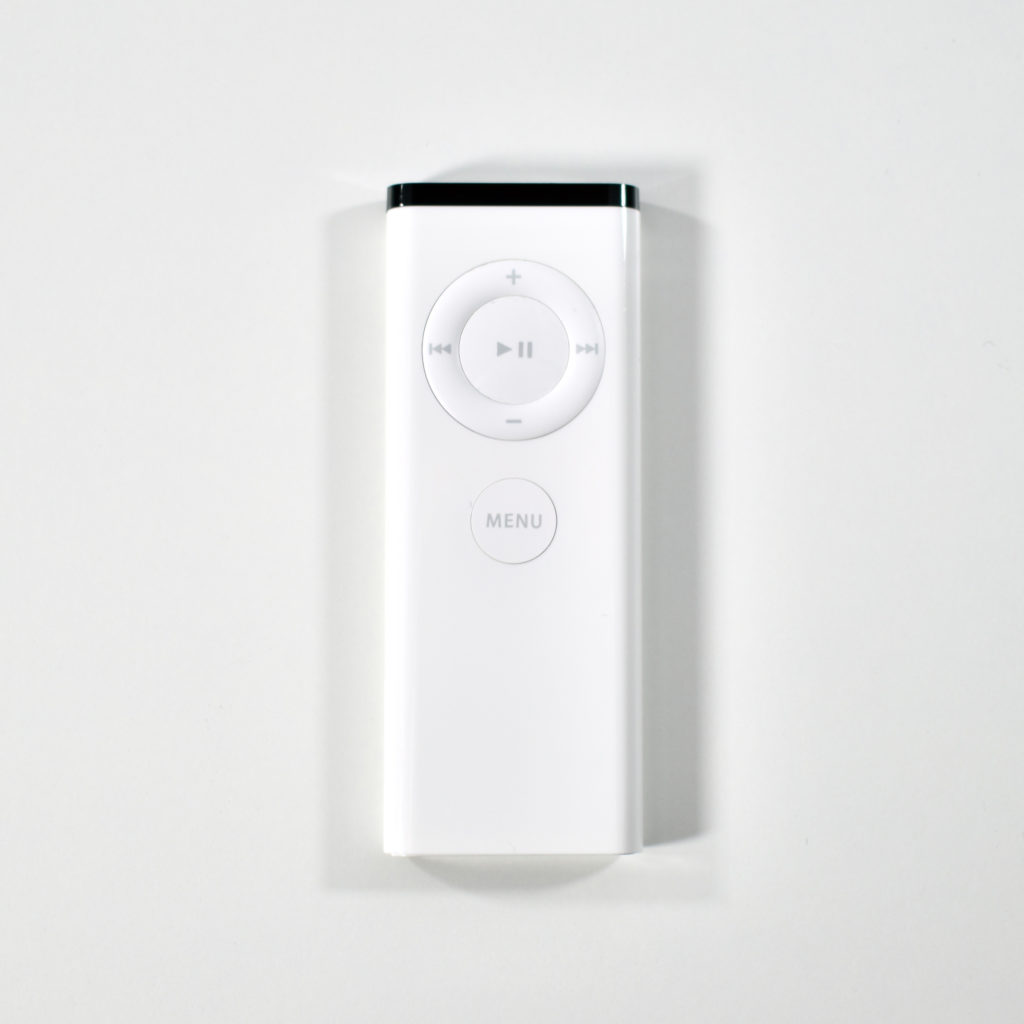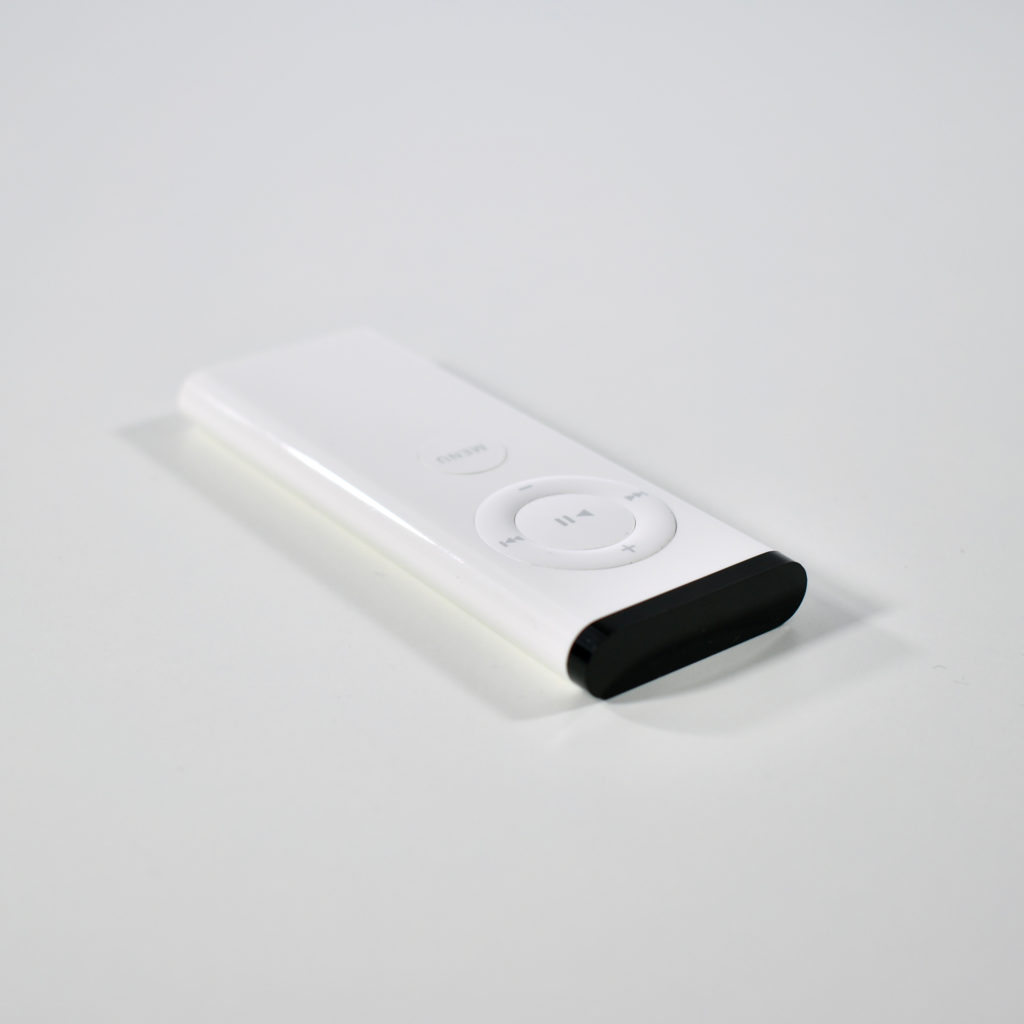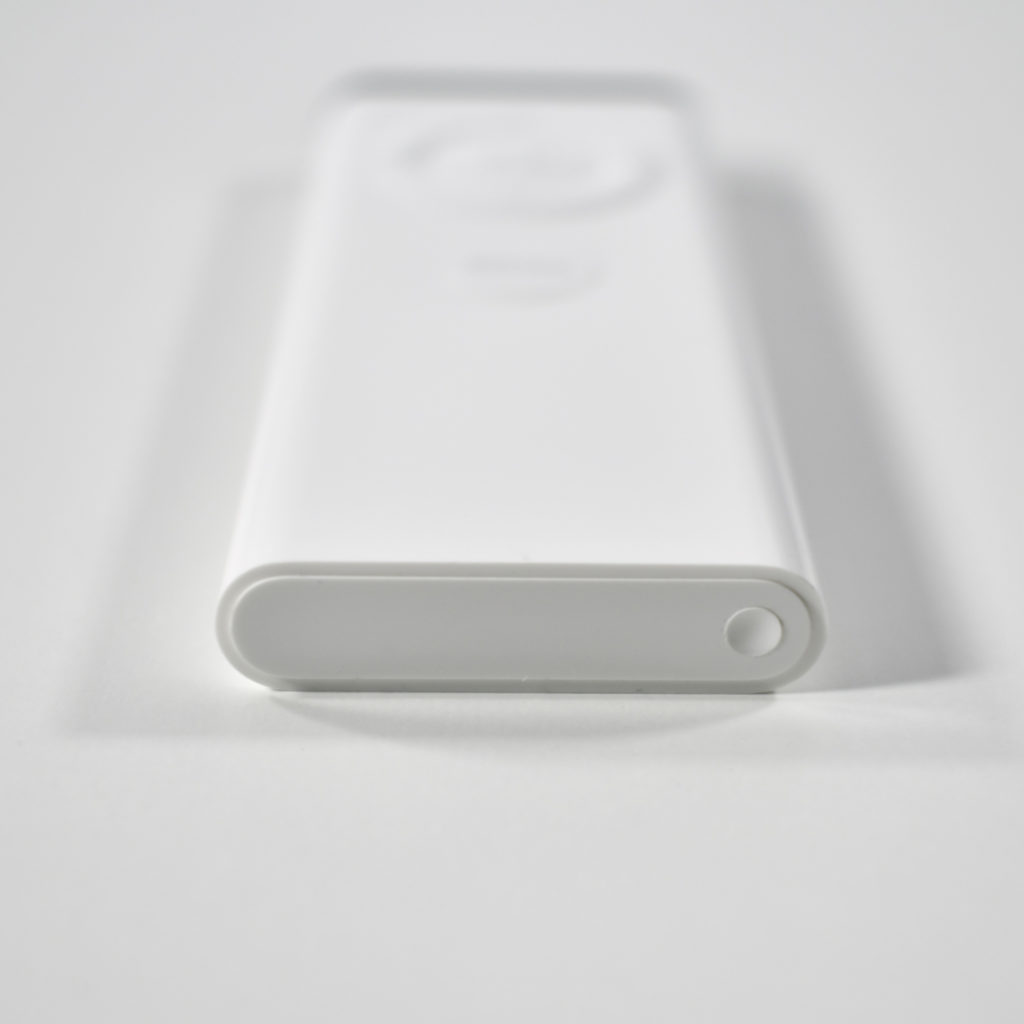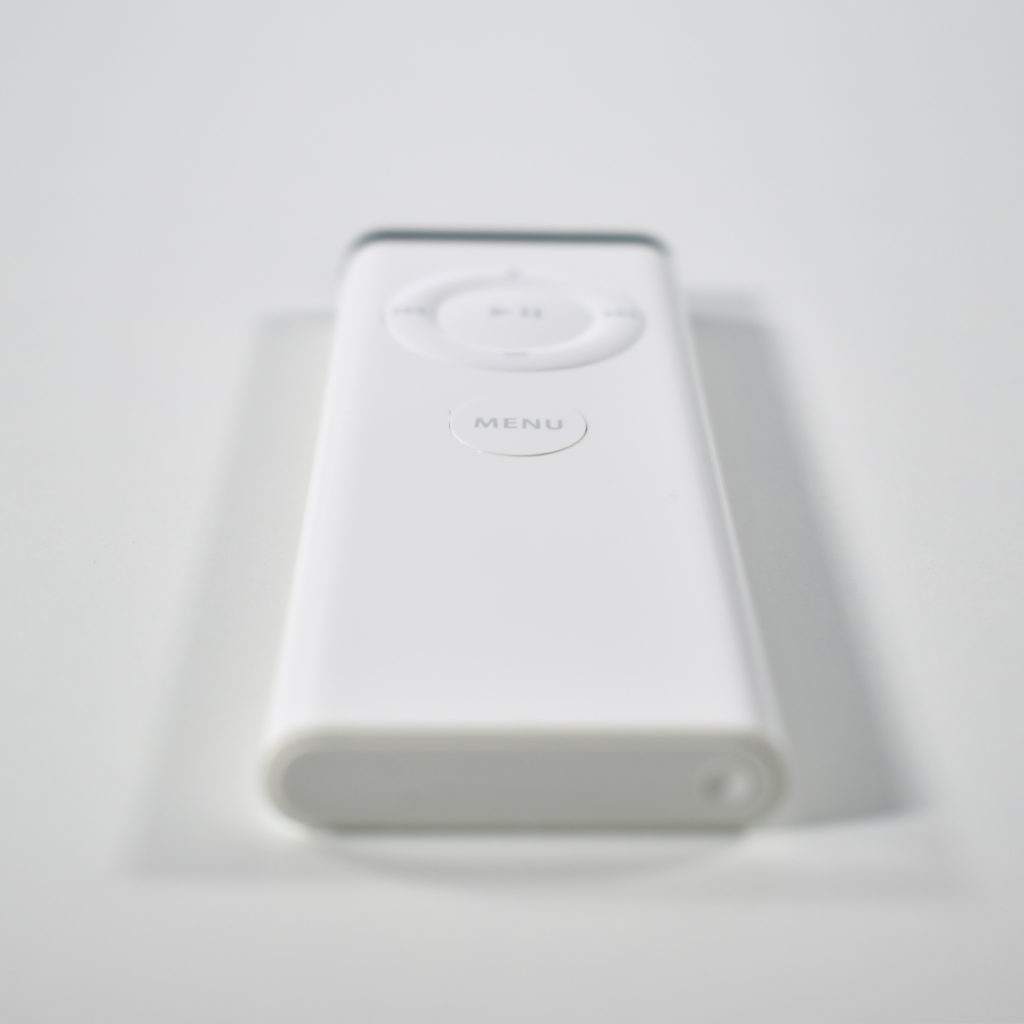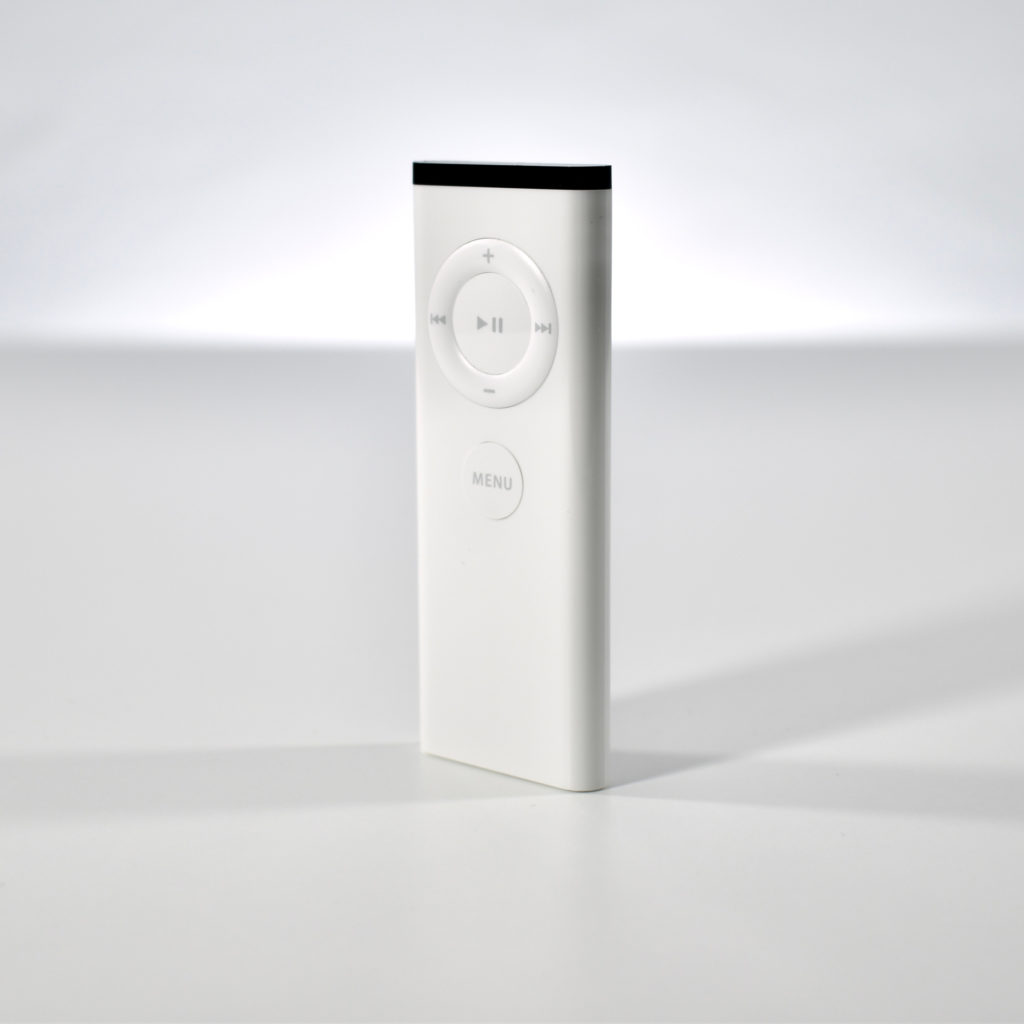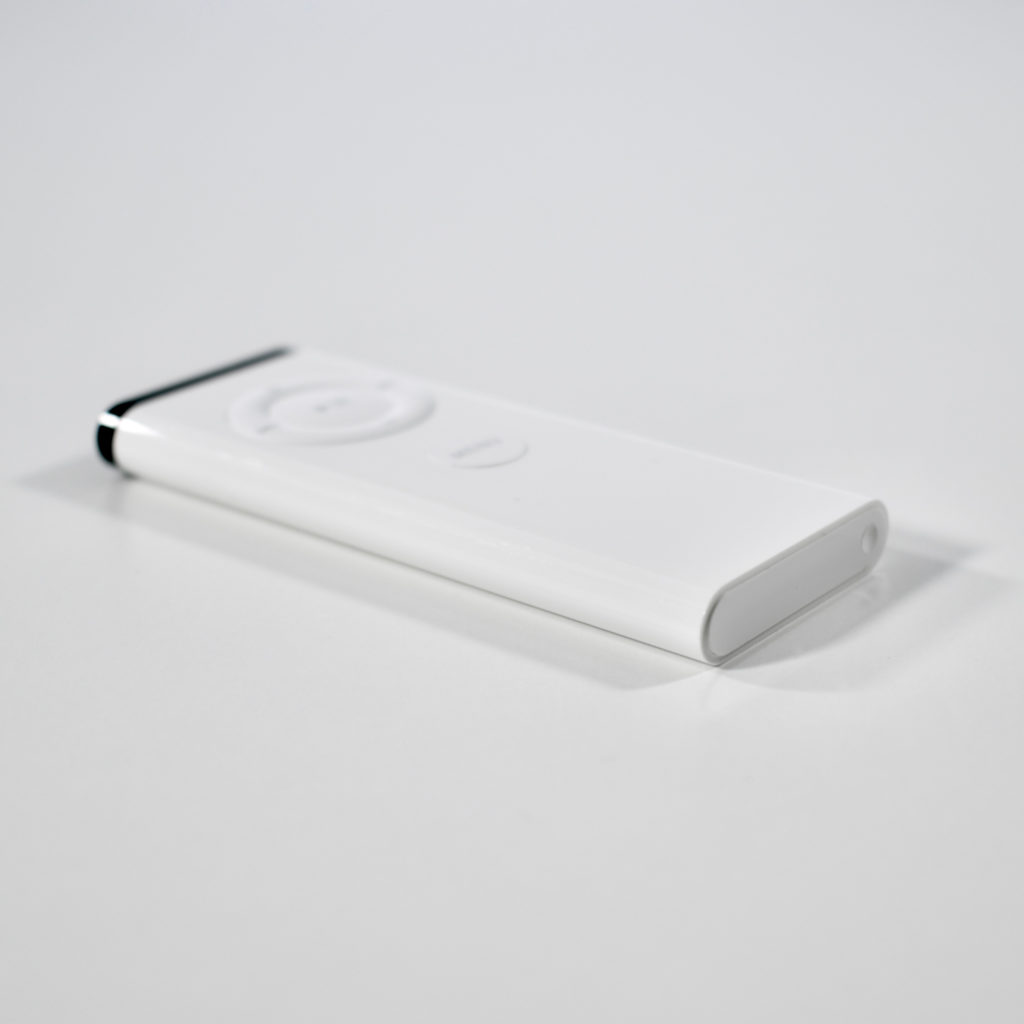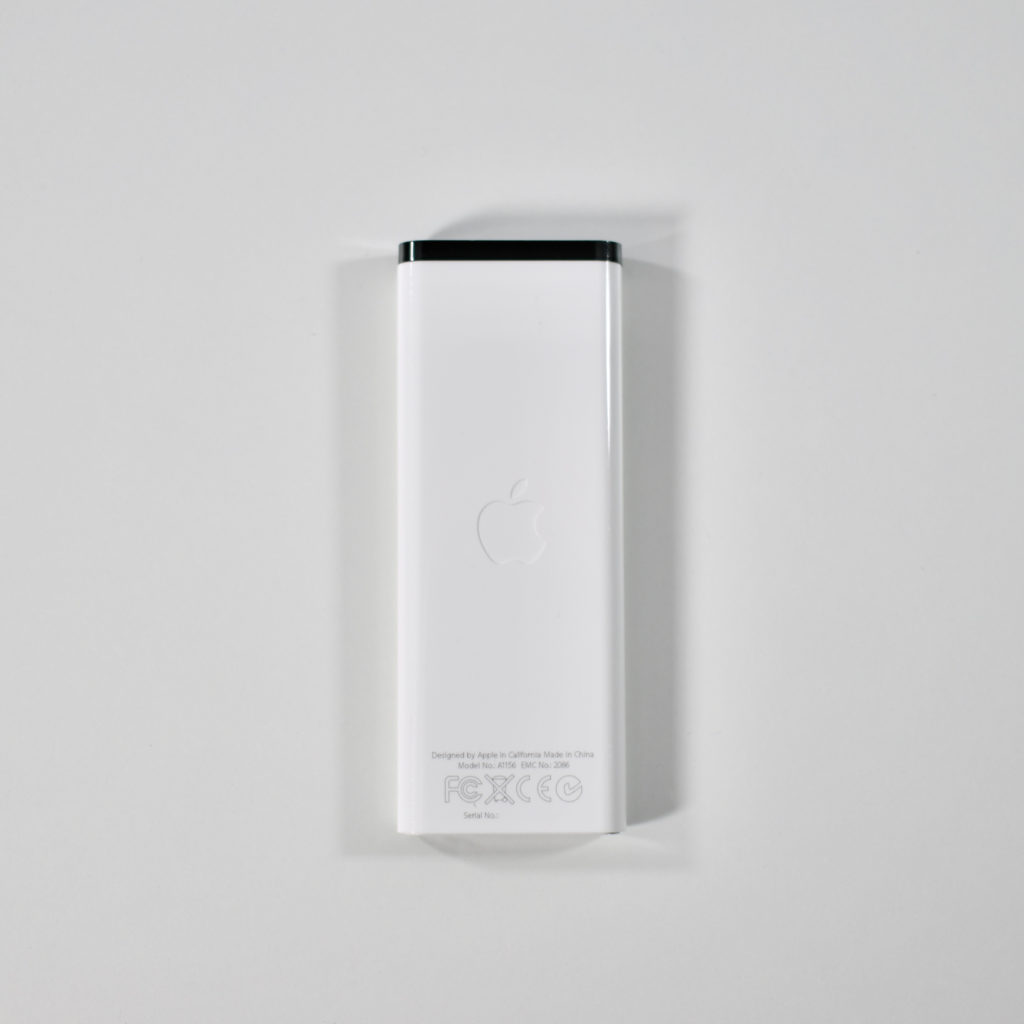Mac mini (original) “Take One” store brochure (January 2005)—This 1-page brochure measures 4.375 x 6.5 inches. The front features a photo of the Mac mini and the headline “The most affordable Mac ever.” on a white background. The front also includes a diagram of the Mac mini set up with “your existing keyboard, mouse, and display.” and the iLife logo. The back has the headline “Moves at the speed of life.” and includes specifications of the two available configurations. The back has the headline “Introducing Mac mini” and includes a photo of the back of the computer (presumably to show its ports) and specifications of the two available configurations.
eMac “Take One” store brochure (May 2005)—This 1-page brochure measures 4.375 x 6.5 inches and features an eMac on a white background on the front with various features highlighted. The back has the headline “Fast. Affordable. Simply amazing.” and includes specifications of the two available configurations.
Mac mini “Take One” store brochure (July 2005)—This 1-page brochure measures 4.375 x 6.5 inches and features a Mac mini on a light blue background on the front with various features highlighted. The back has the headline “Full featured, compact, Mac mini” and includes a photo of the back of the computer (presumably to show its ports) and specifications of the two available configurations.
iBook G4 “Take One” store brochure (July 2005)—This 1-page brochure measures 4.375 x 6.5 inches and features an iBook G4 on a light blue background on the front with various features highlighted. The back has the headline “Moves at the speed of life.” and includes specifications of the two available configurations (12-inch and 14-inch).
iMac G5 “Take One” store brochure (October 2005)—This 1-page brochure measures 4.375 x 6.5 inches and features the headline “The new iMac G5” on a gray-blue background on the front. The front photo shows a hand holding a white Apple Remote pointing at the iMac G5 screen with the Front Row (media) interface. The back includes specifications of the 17- and 20-inch configurations.

